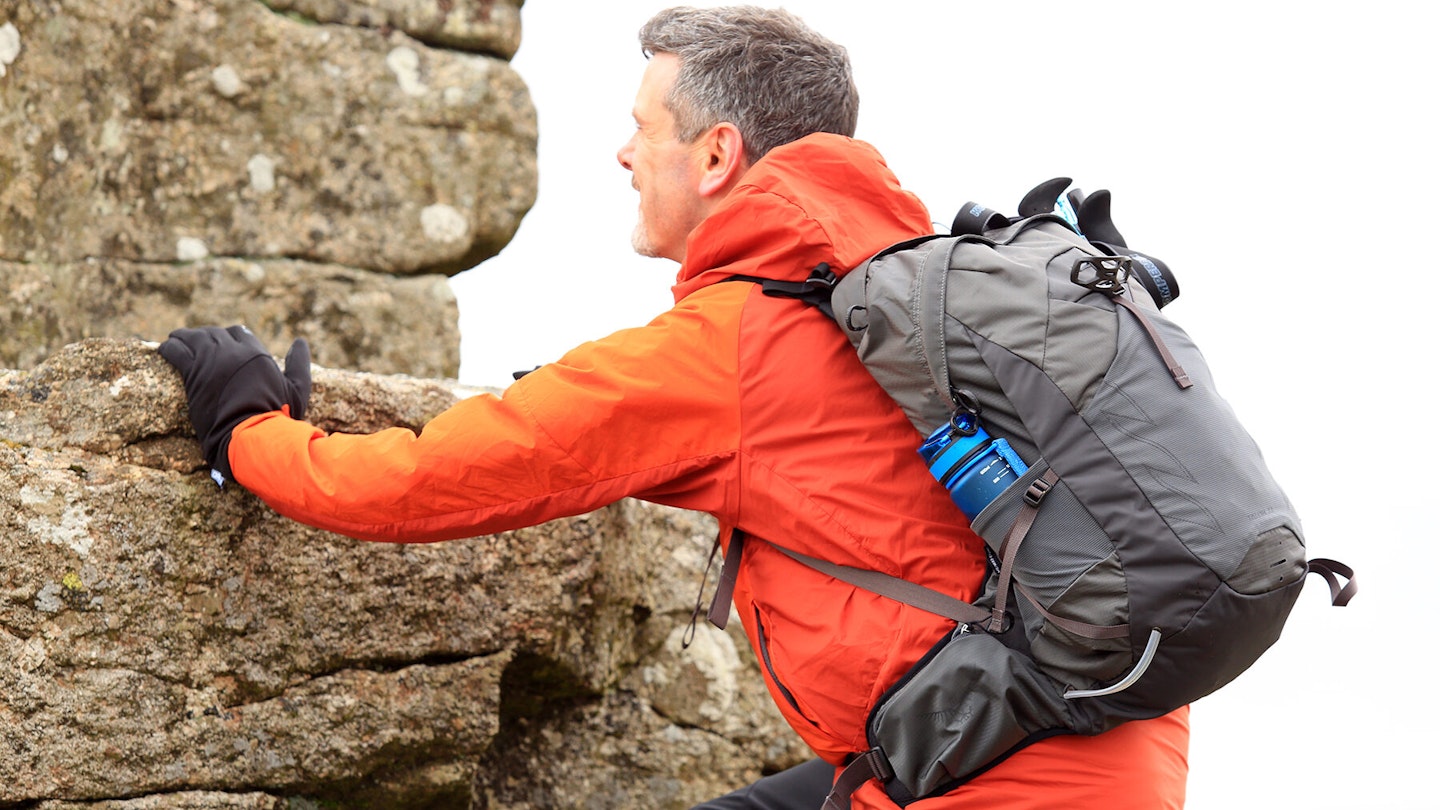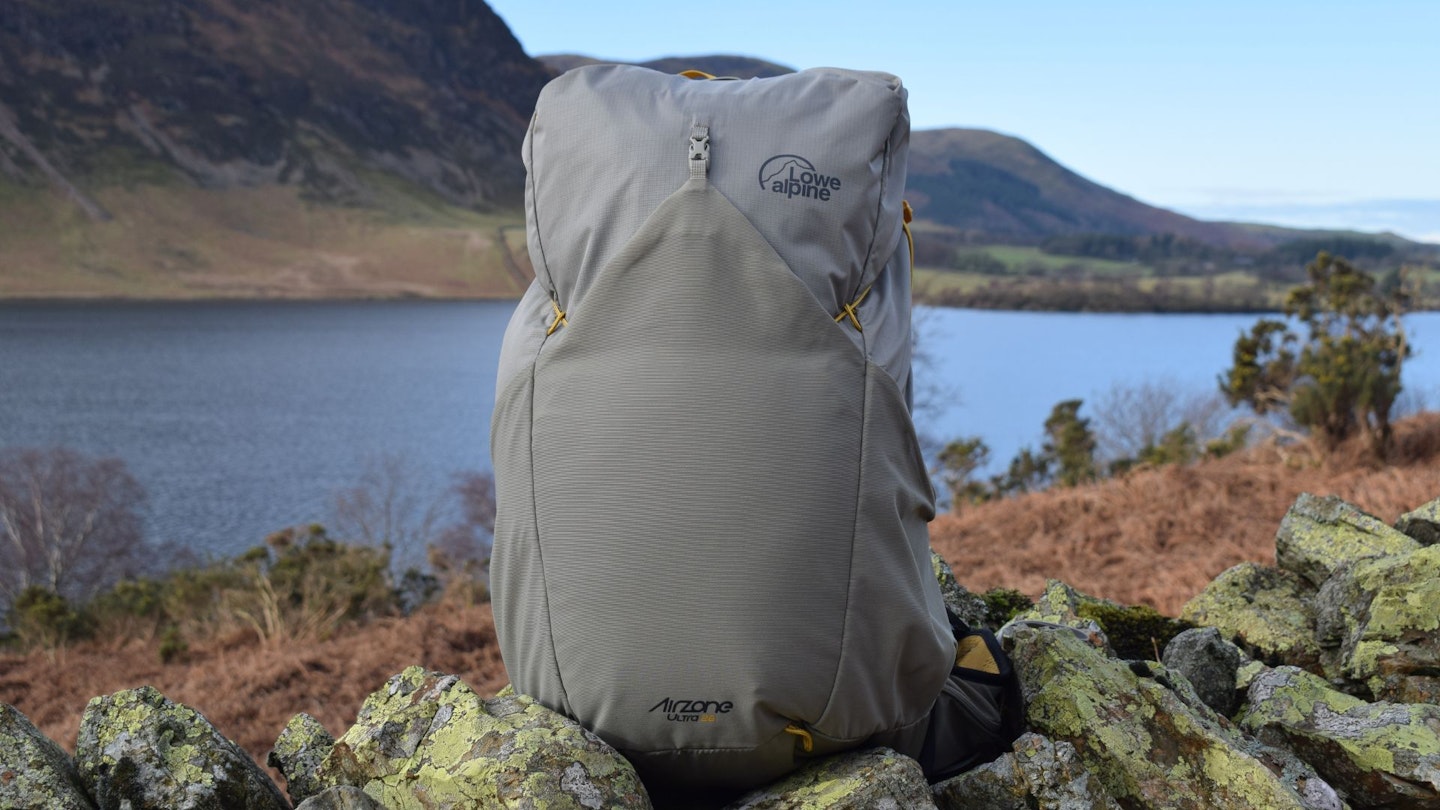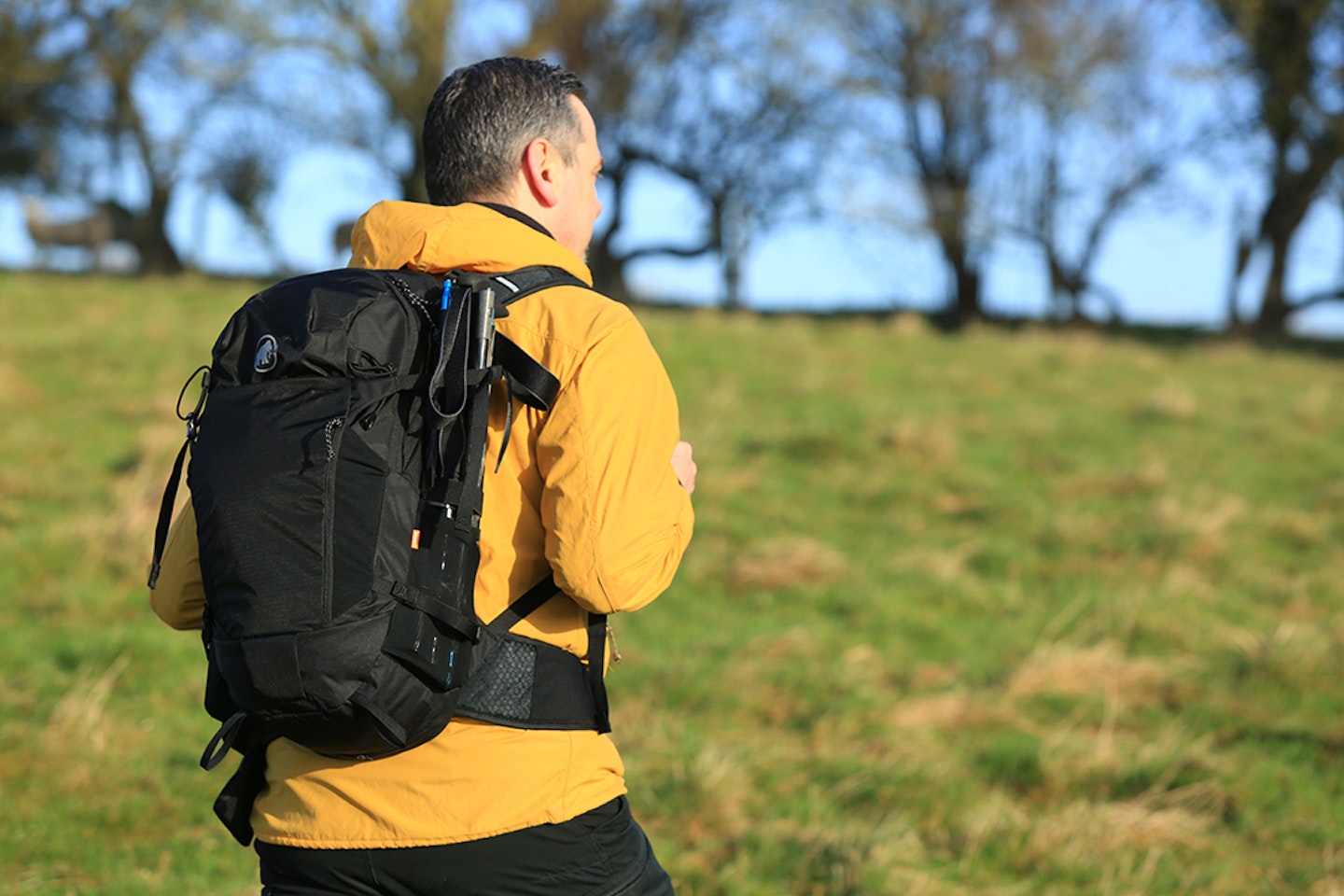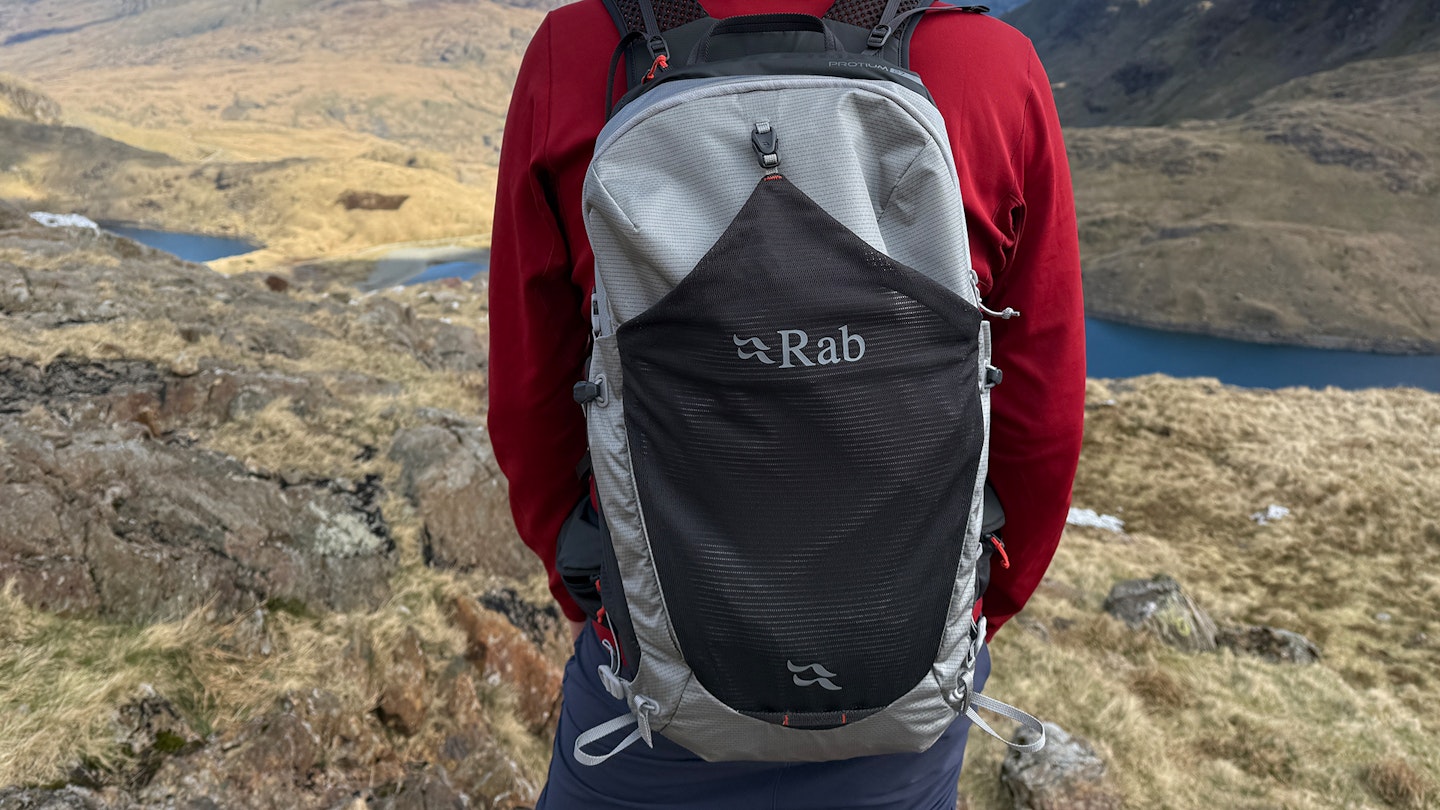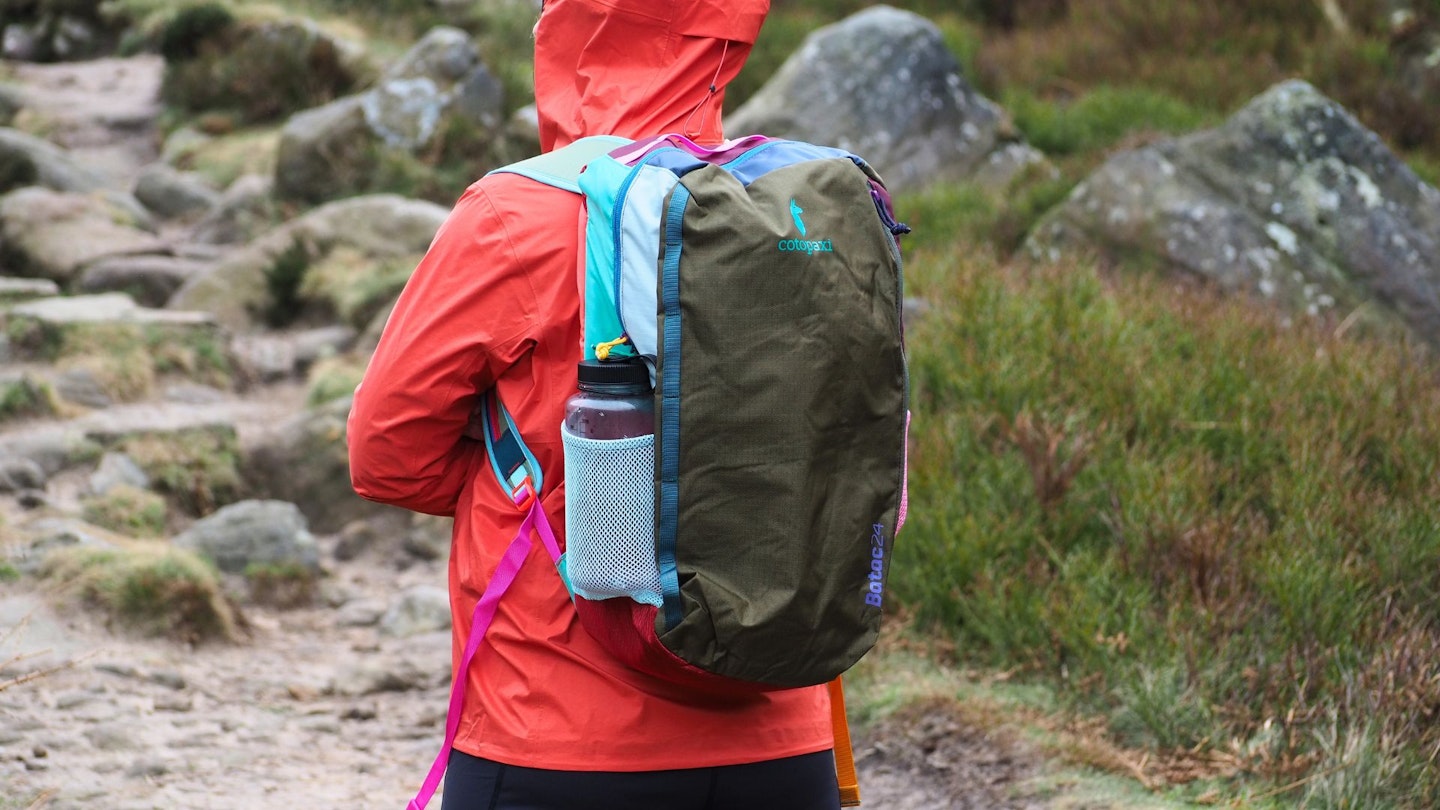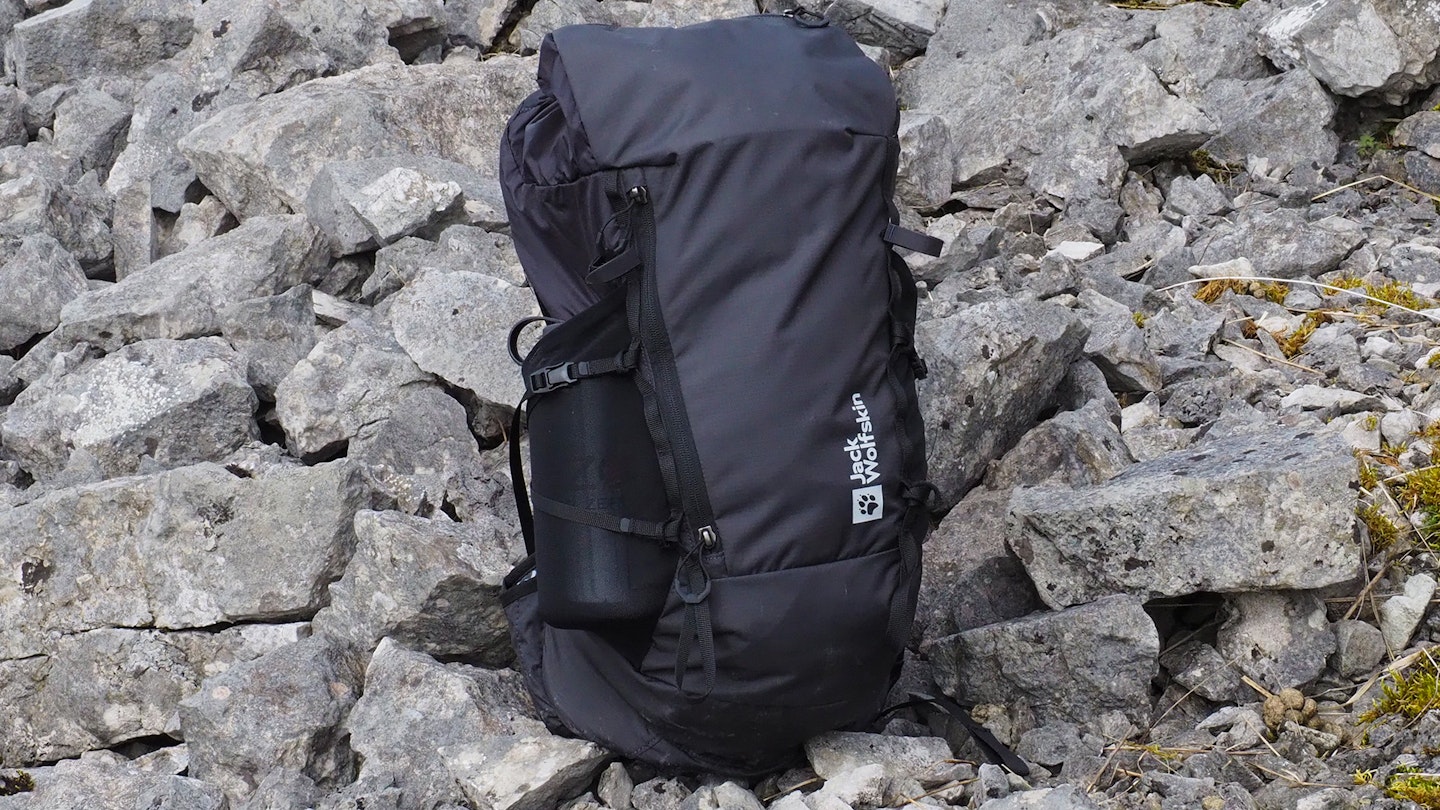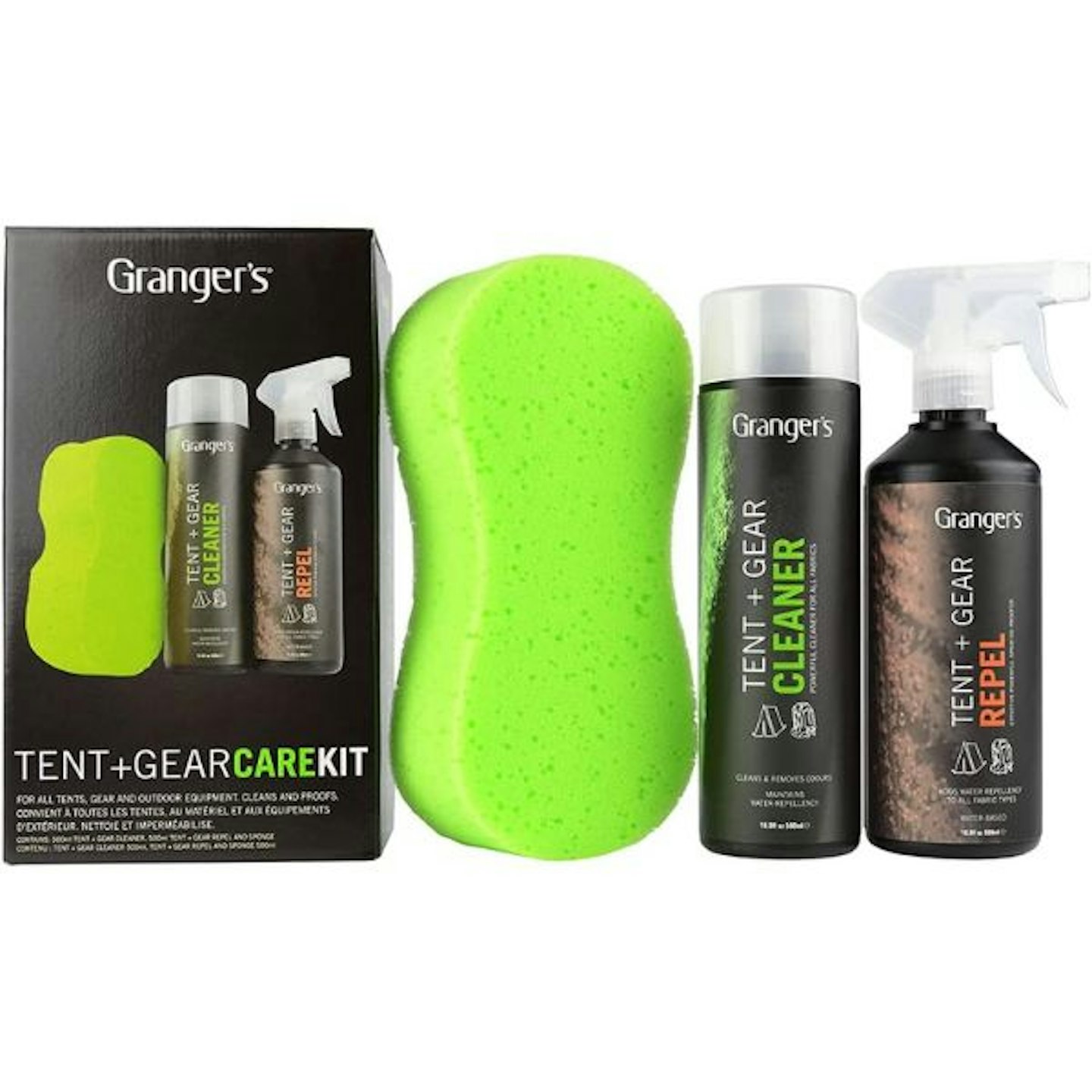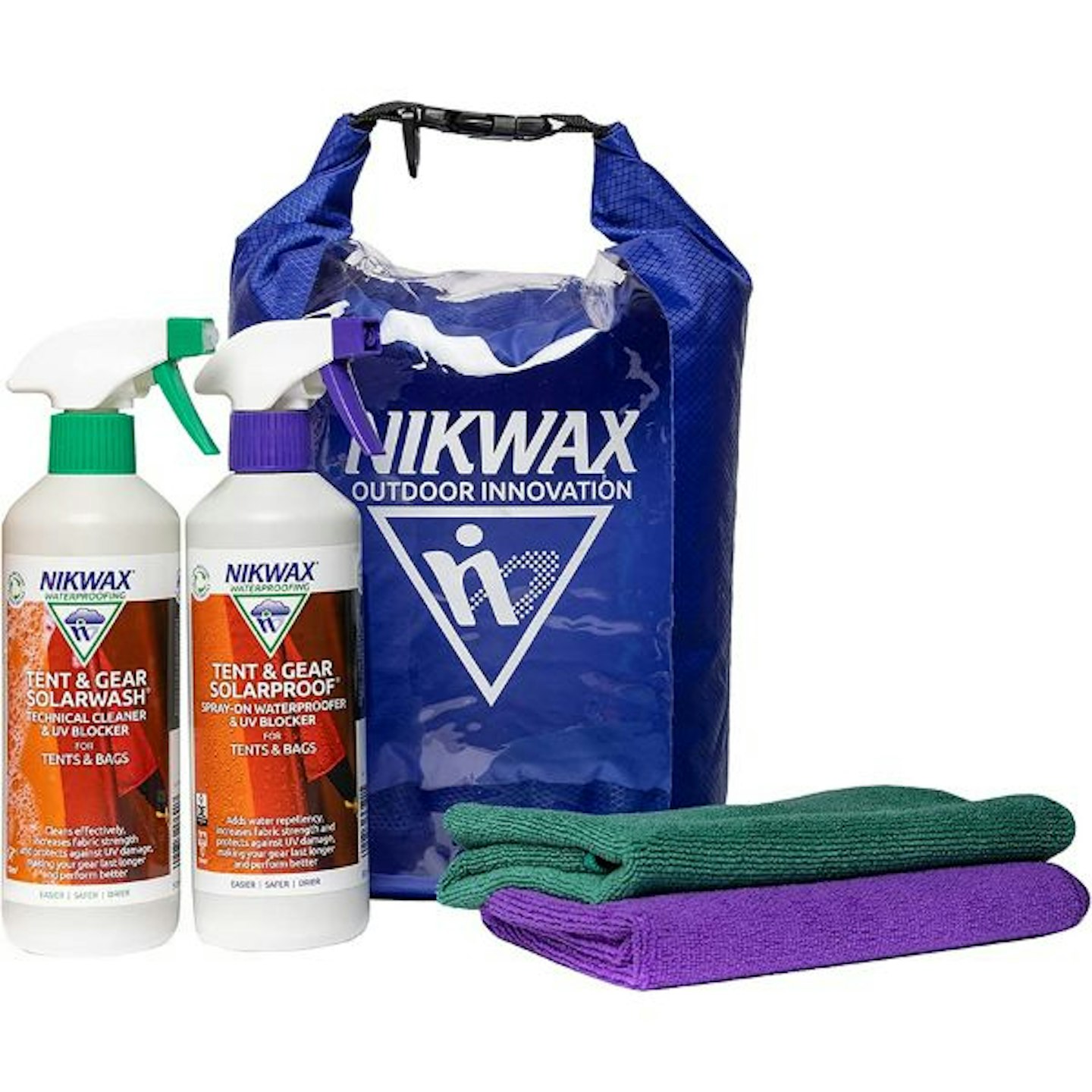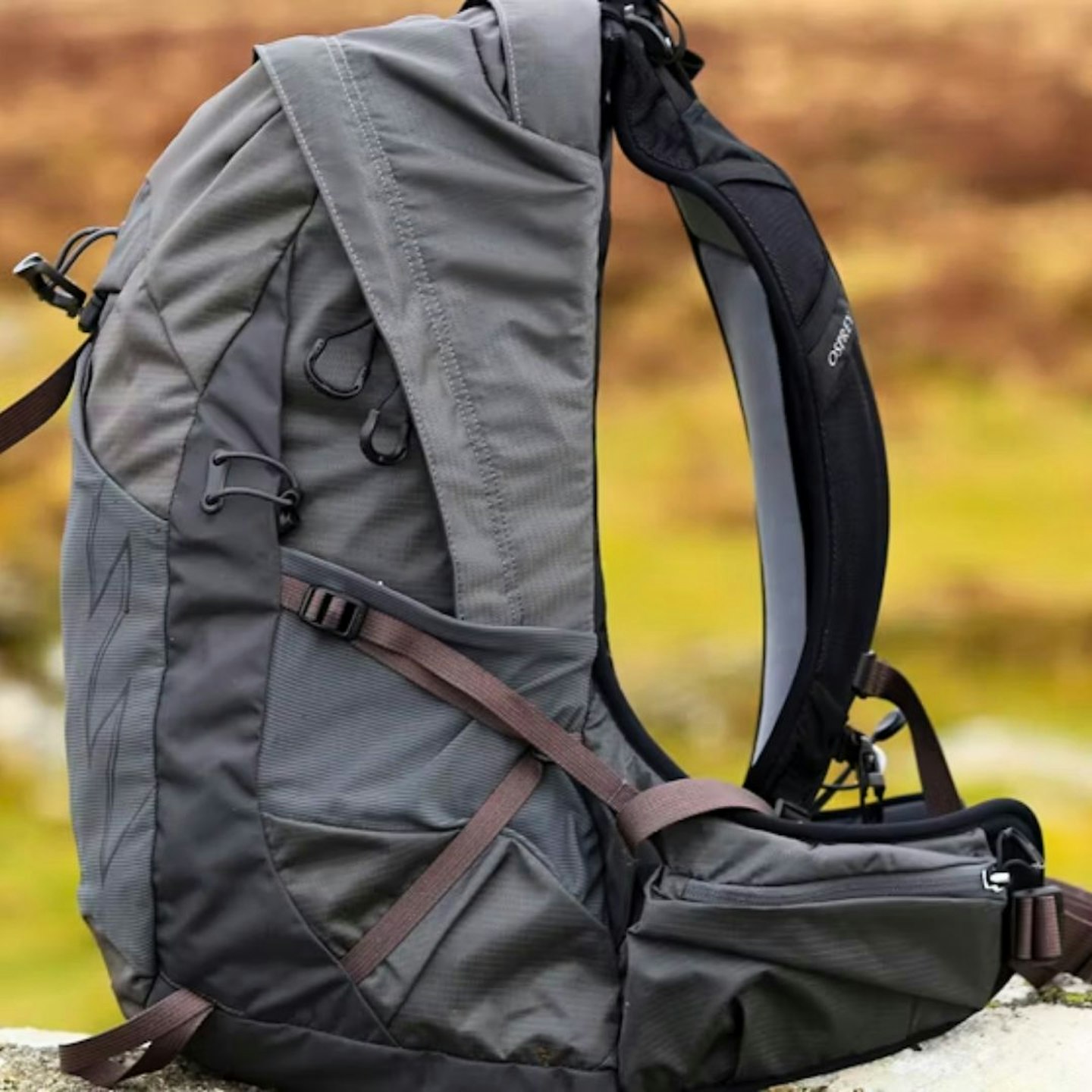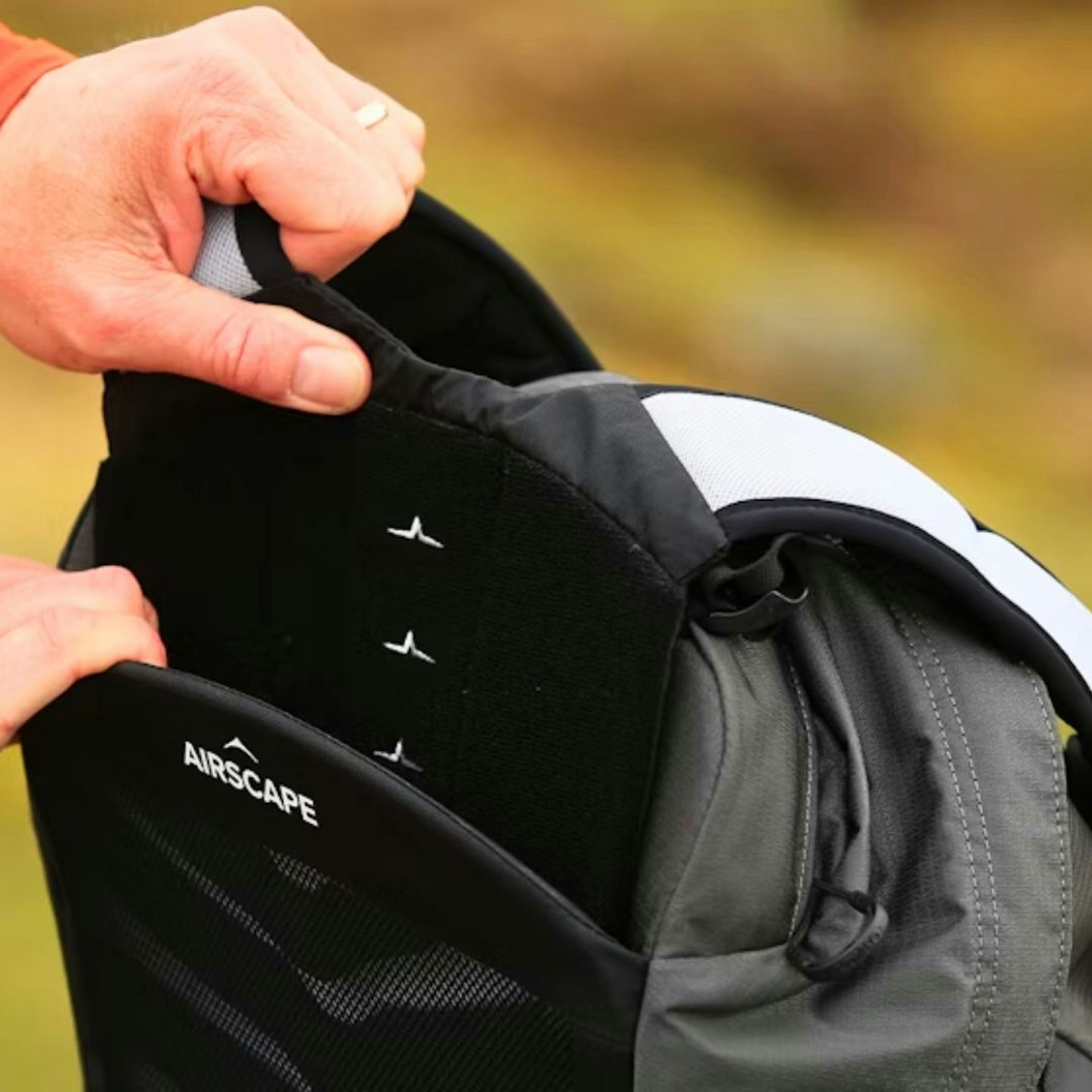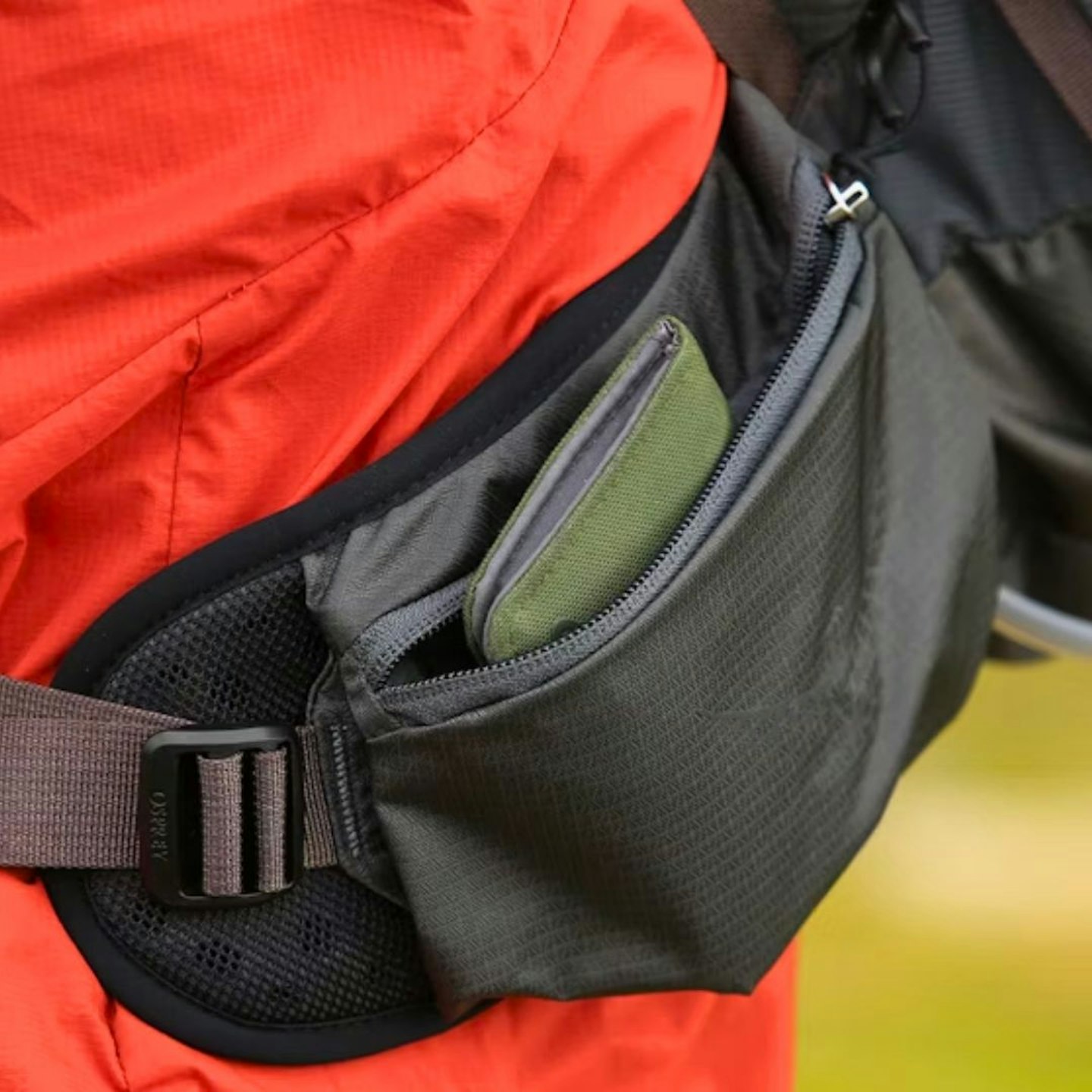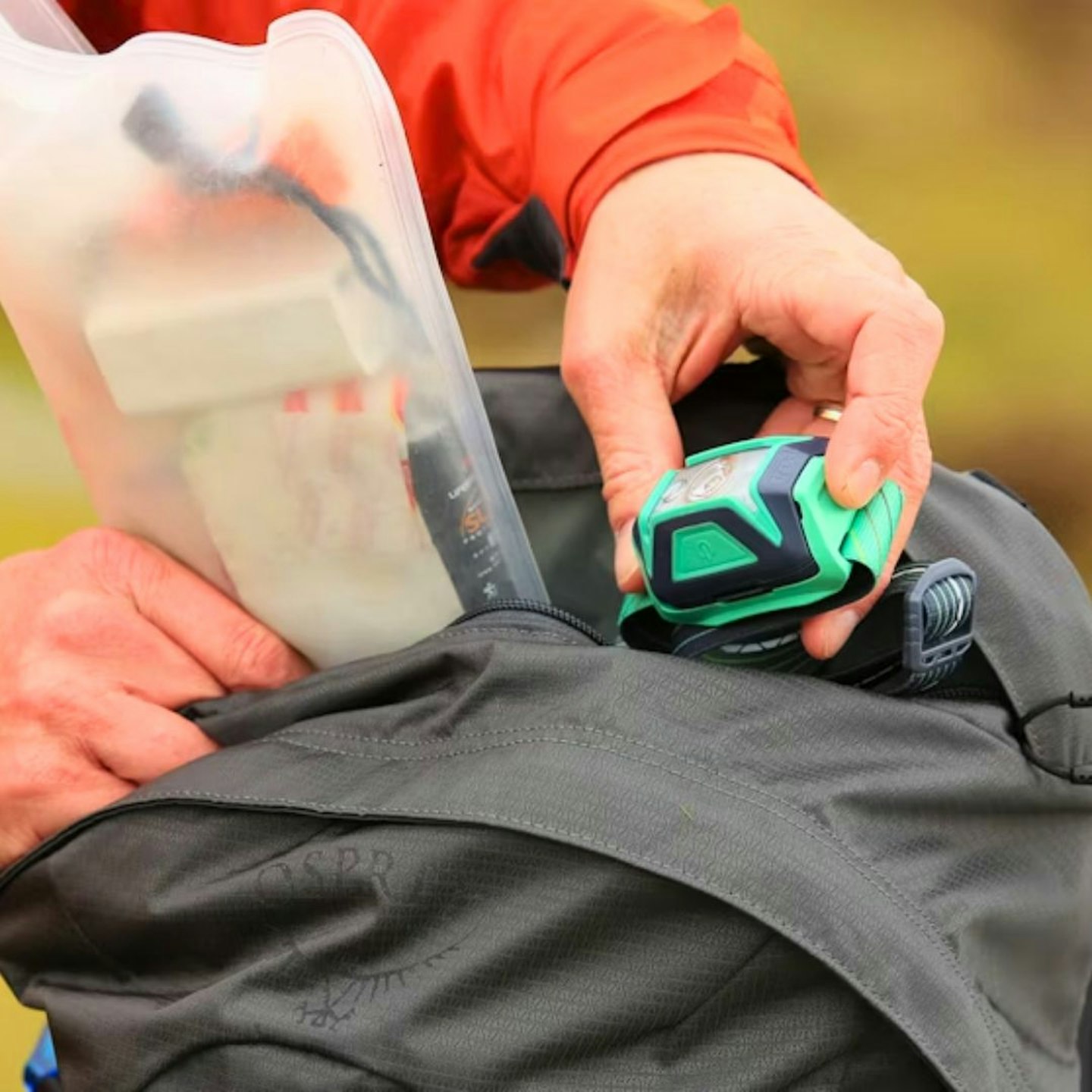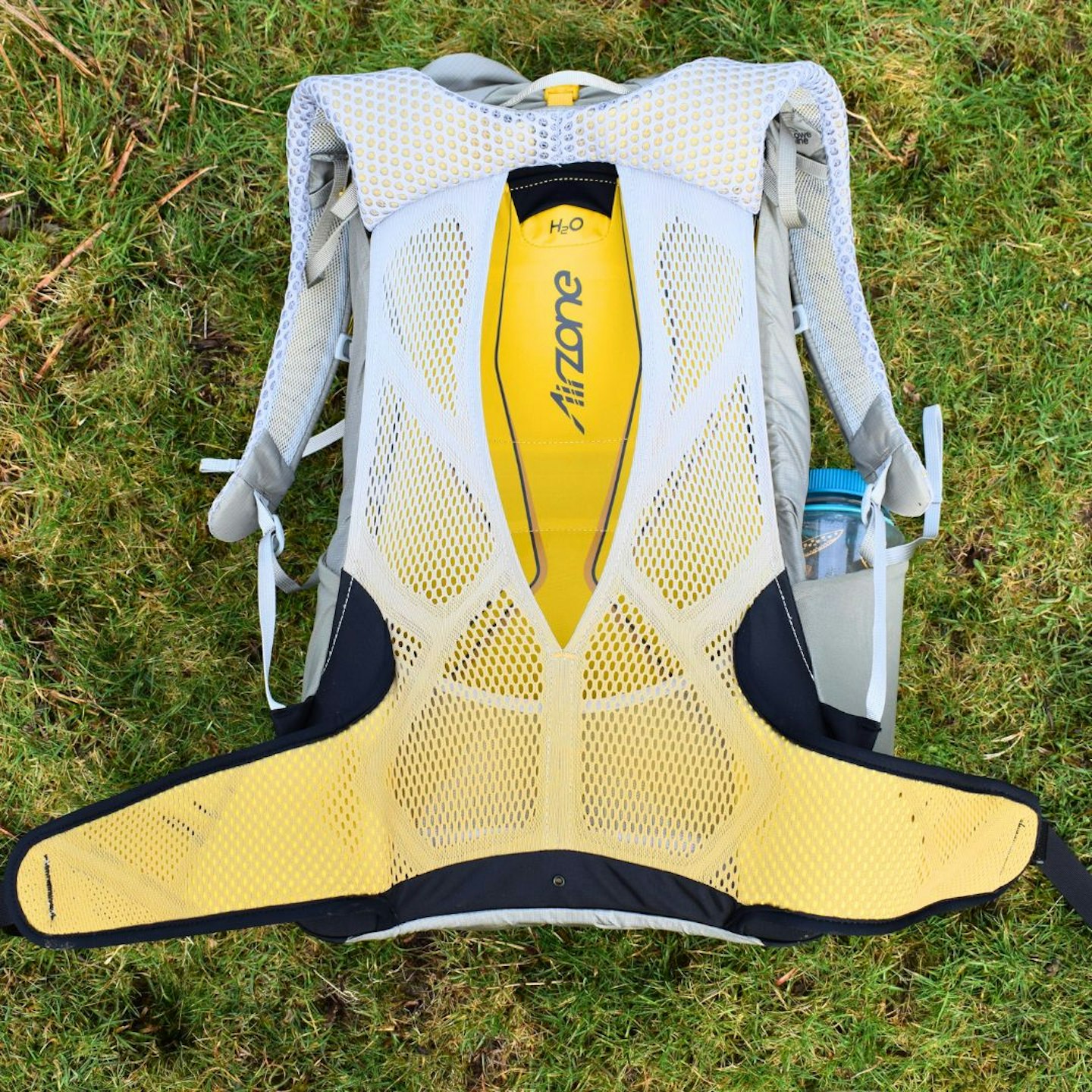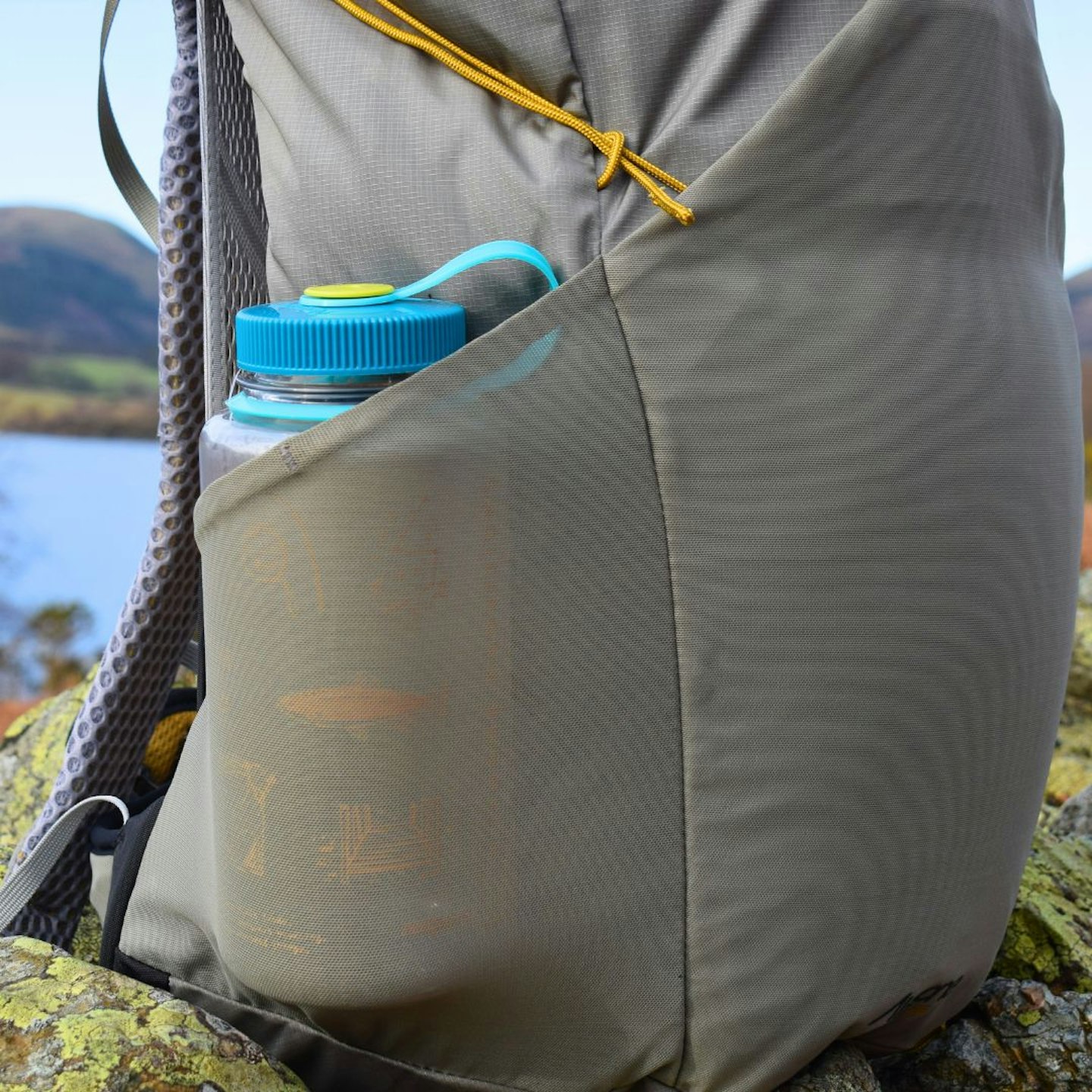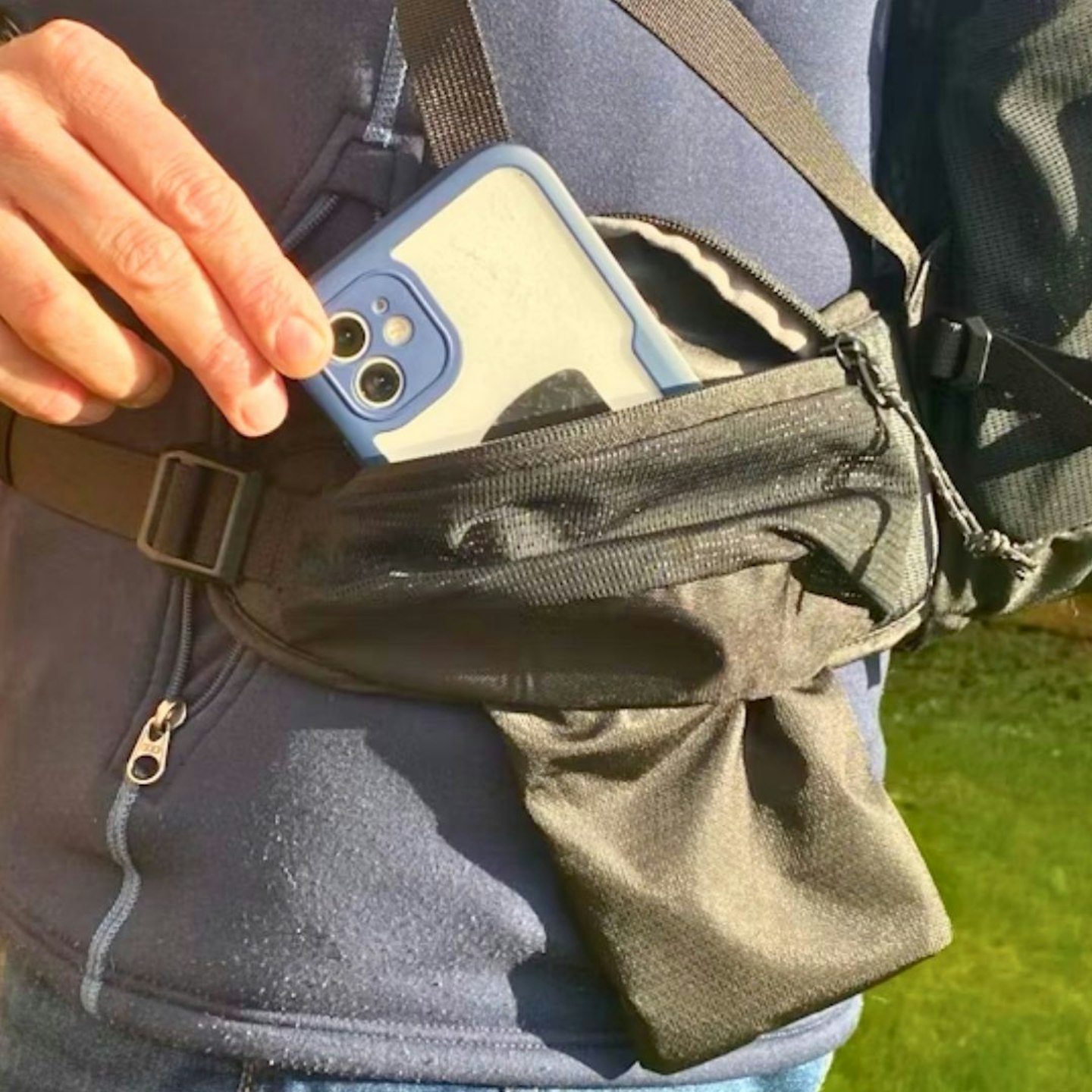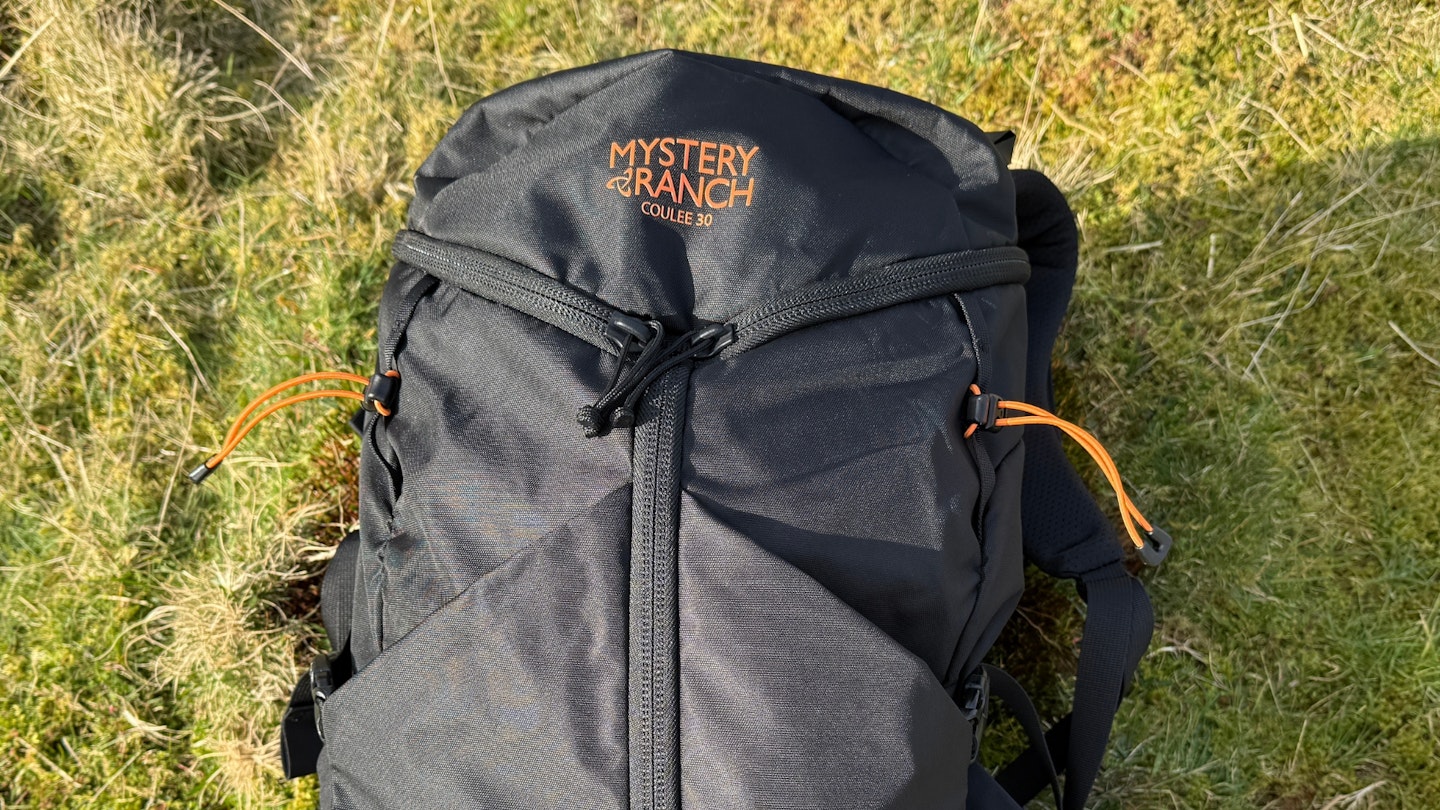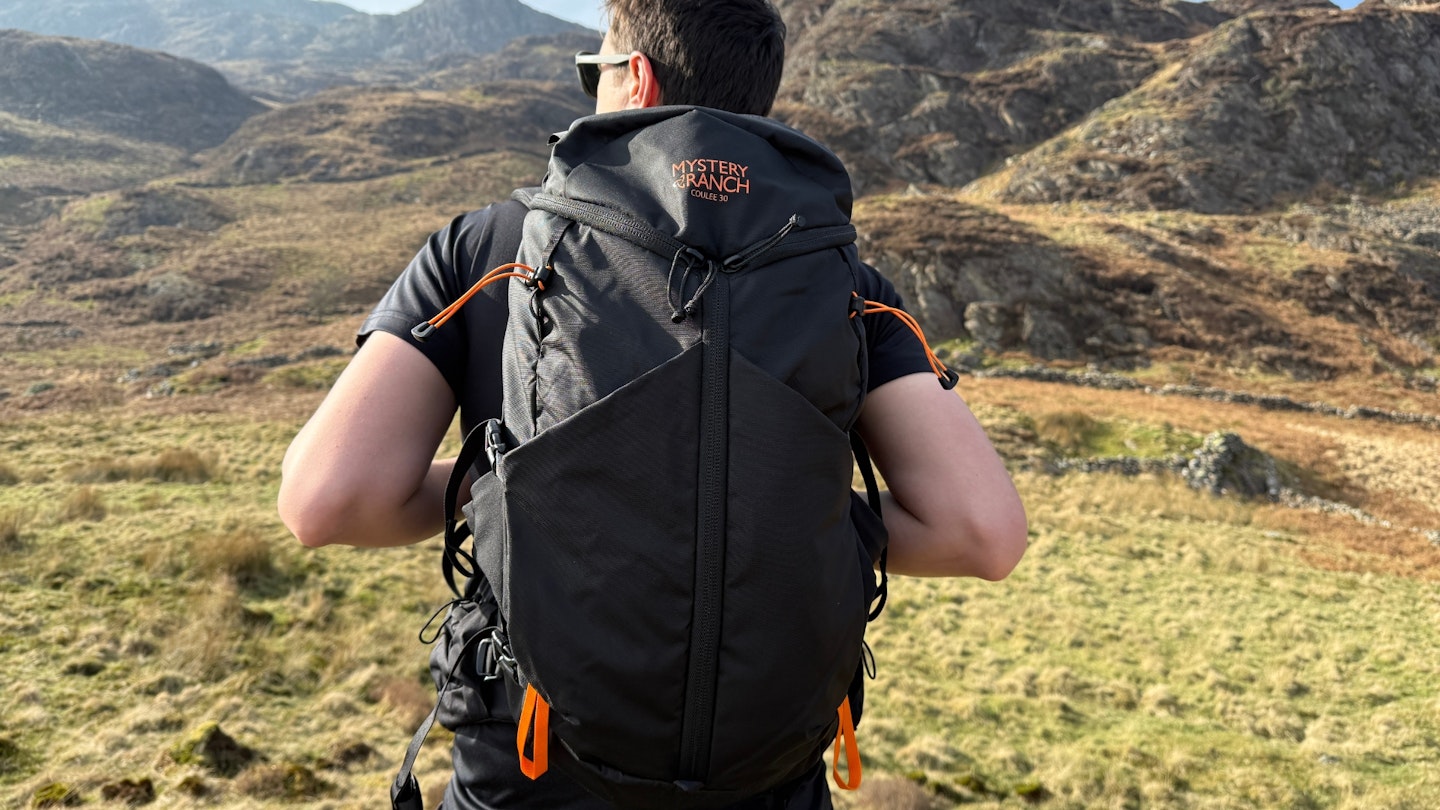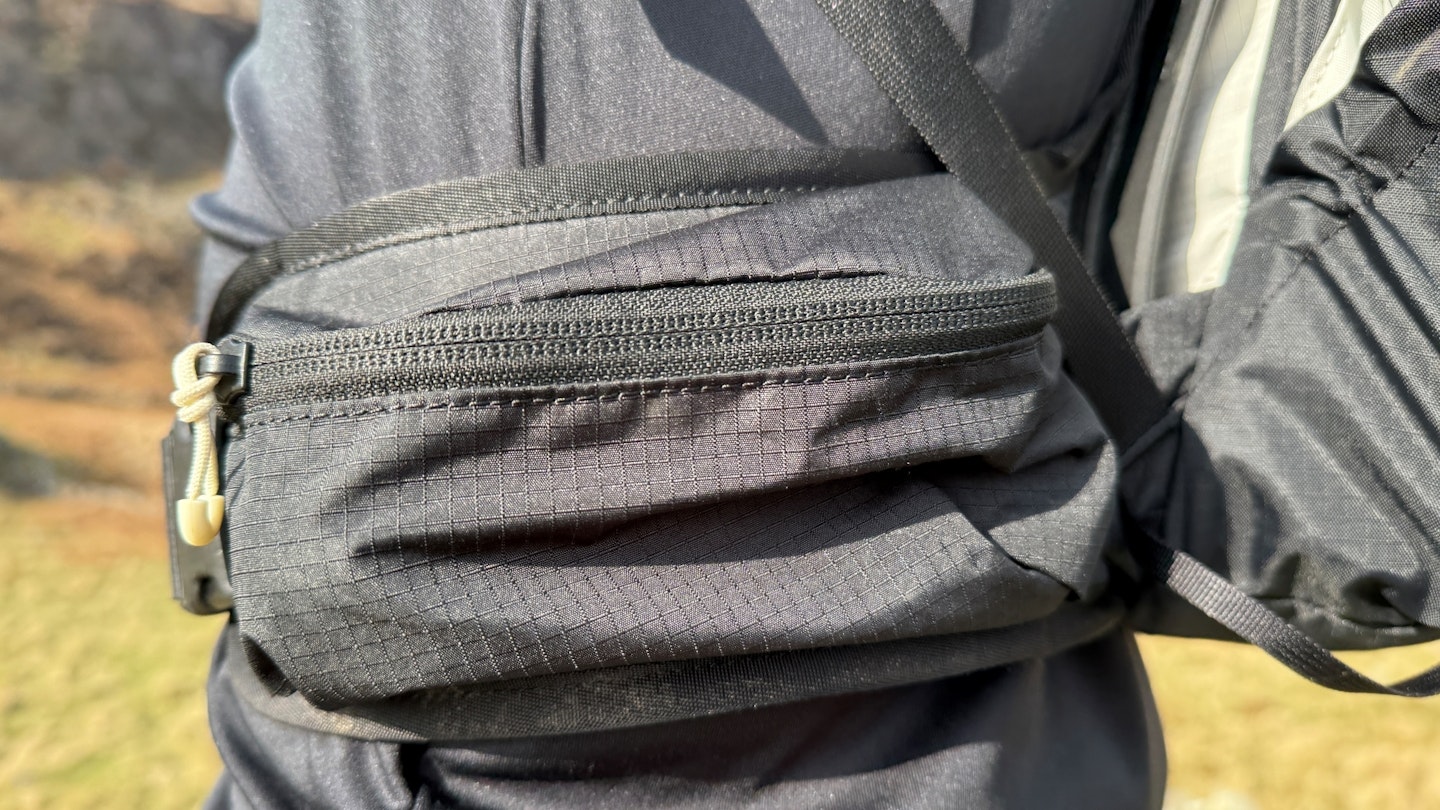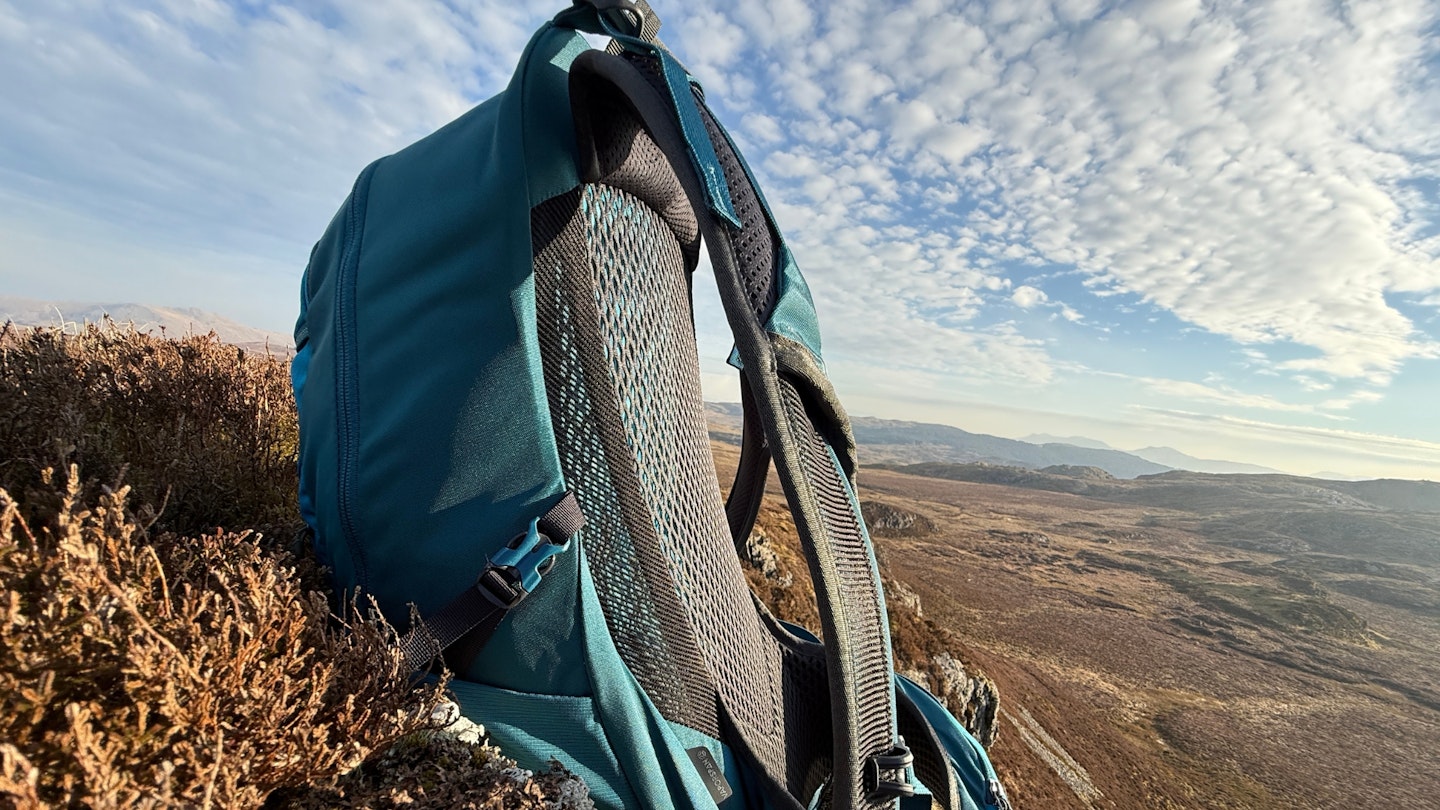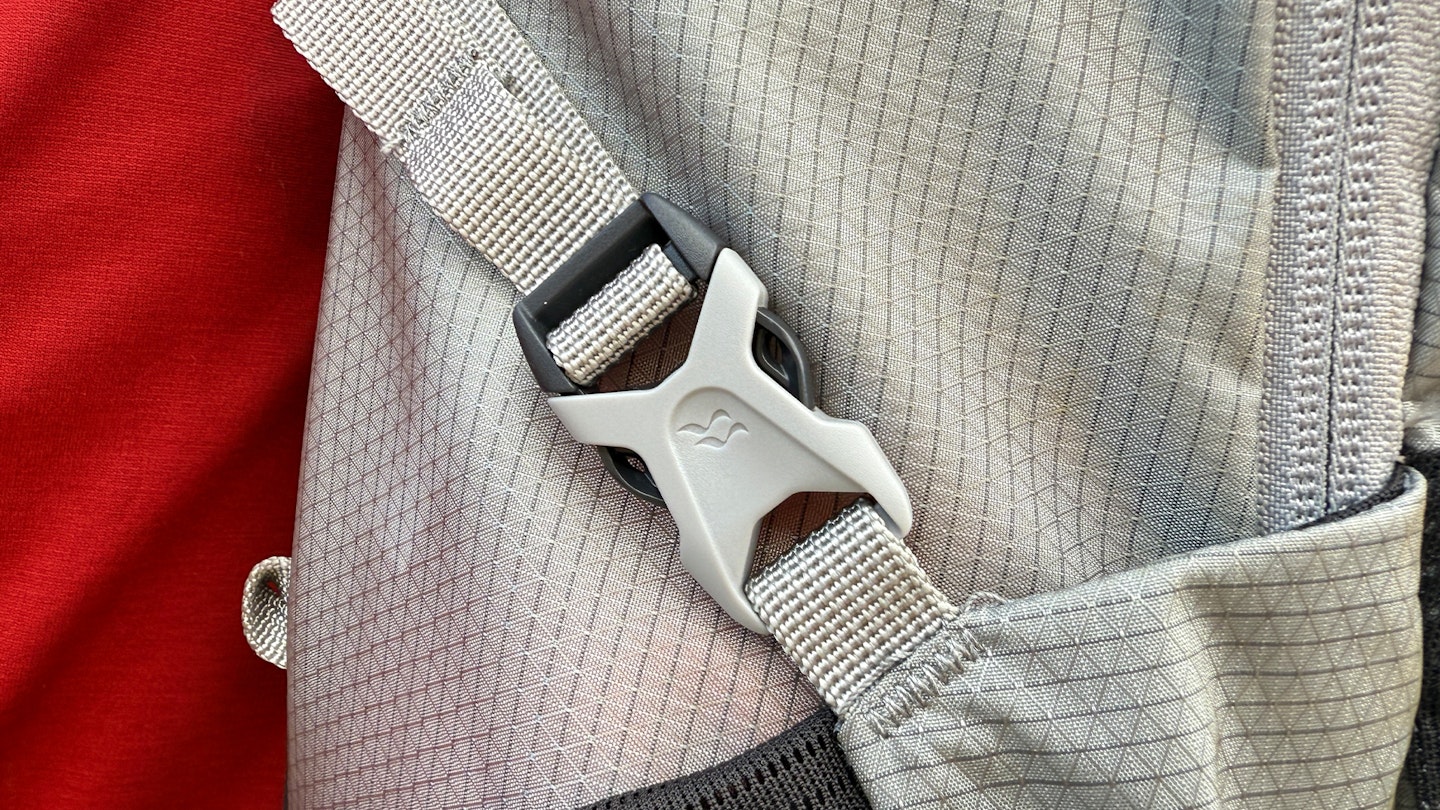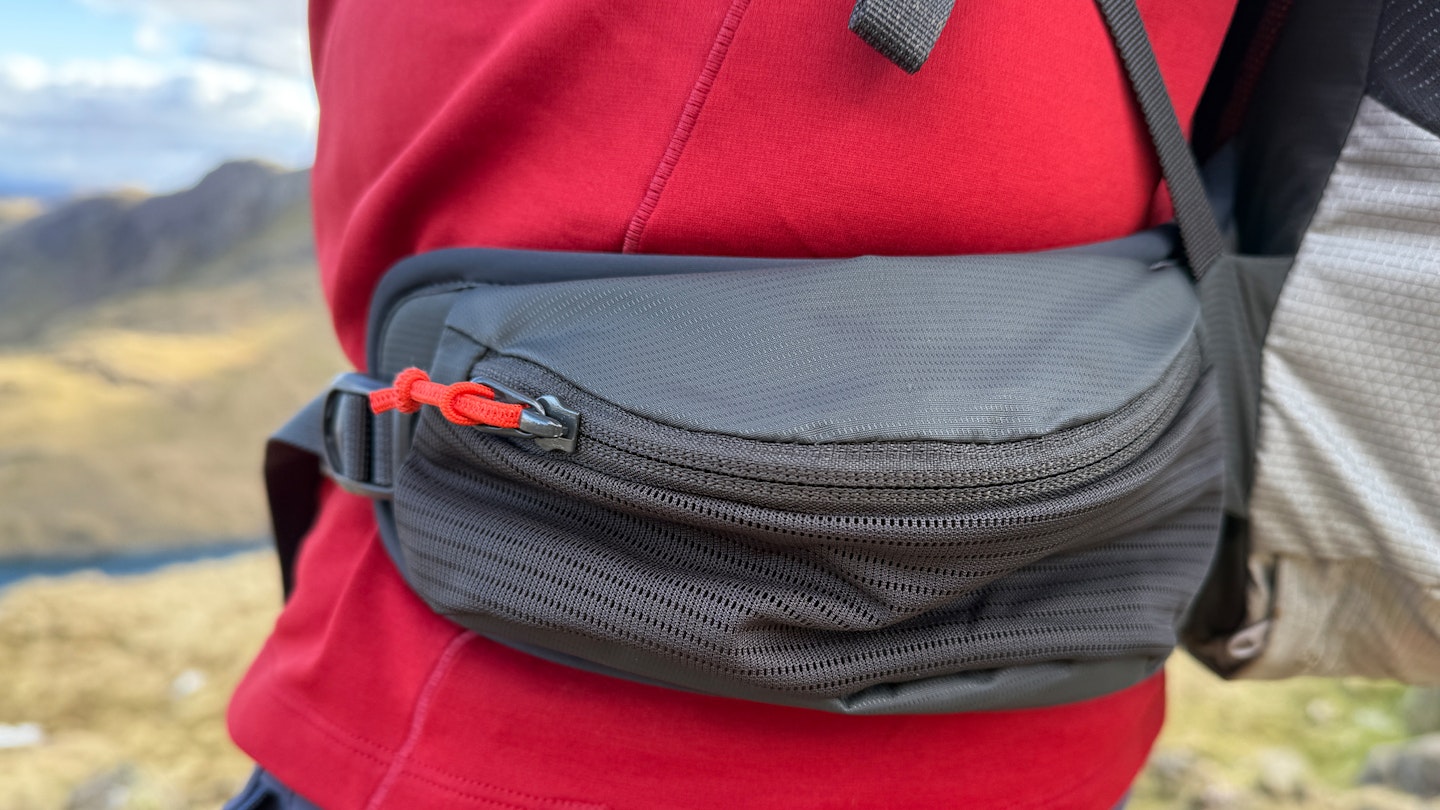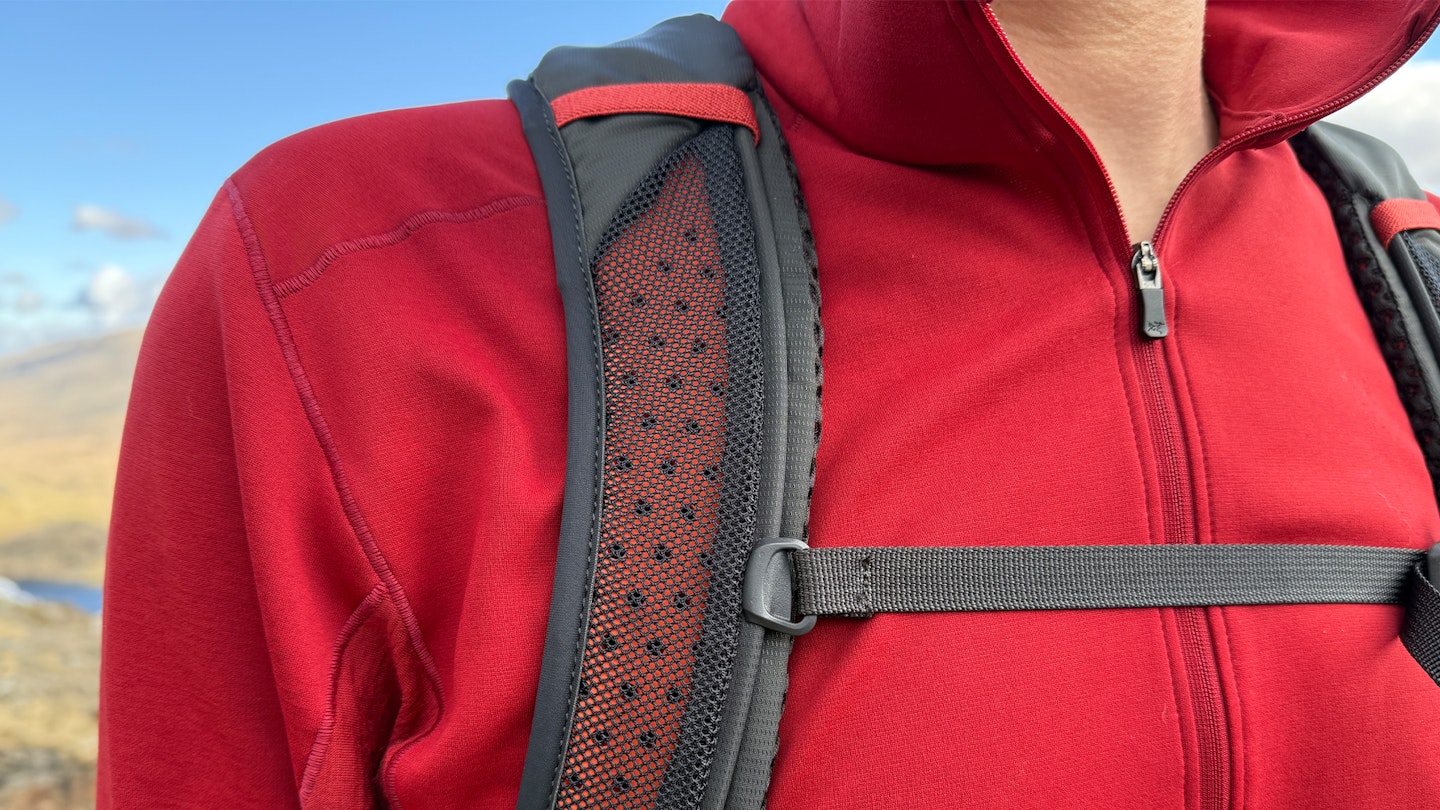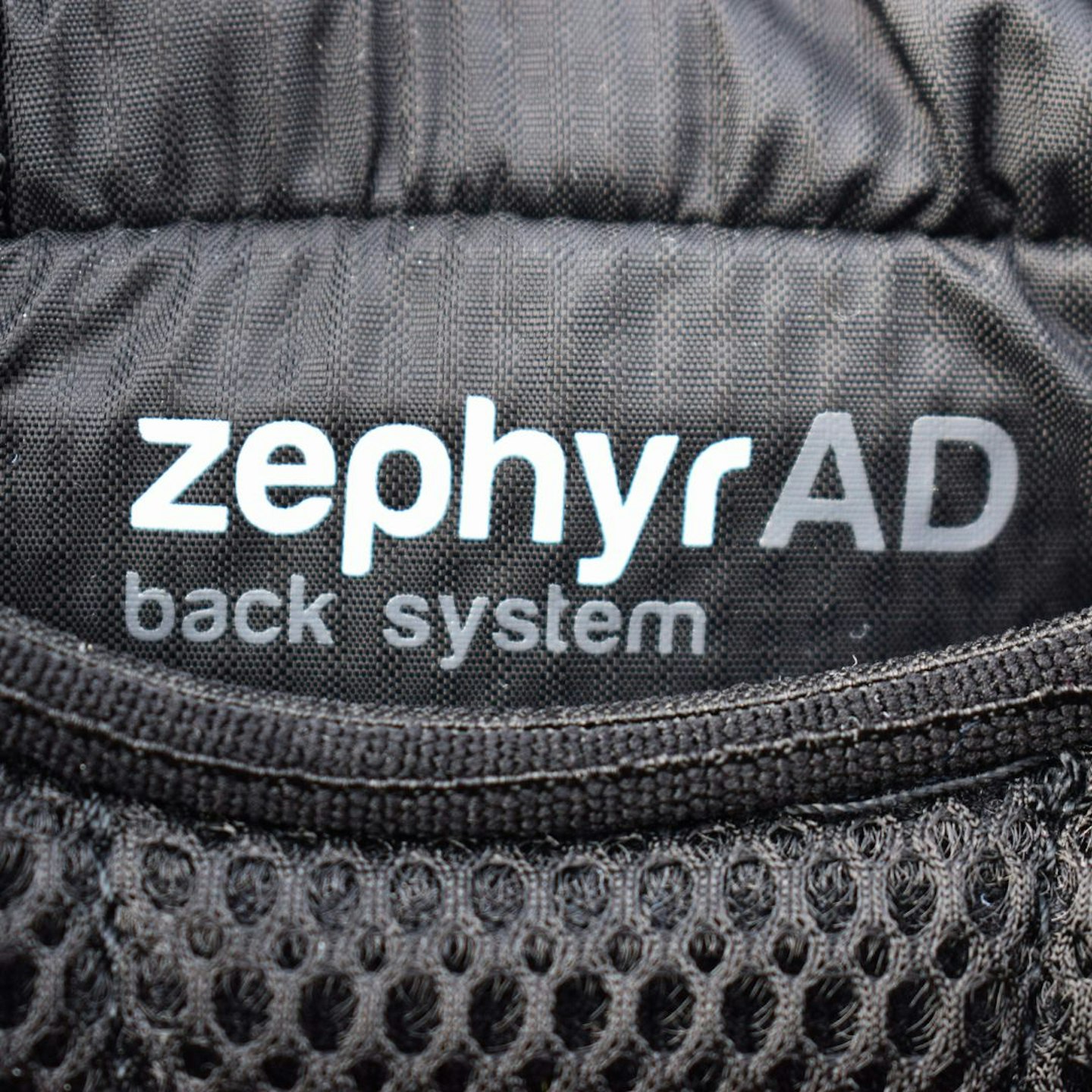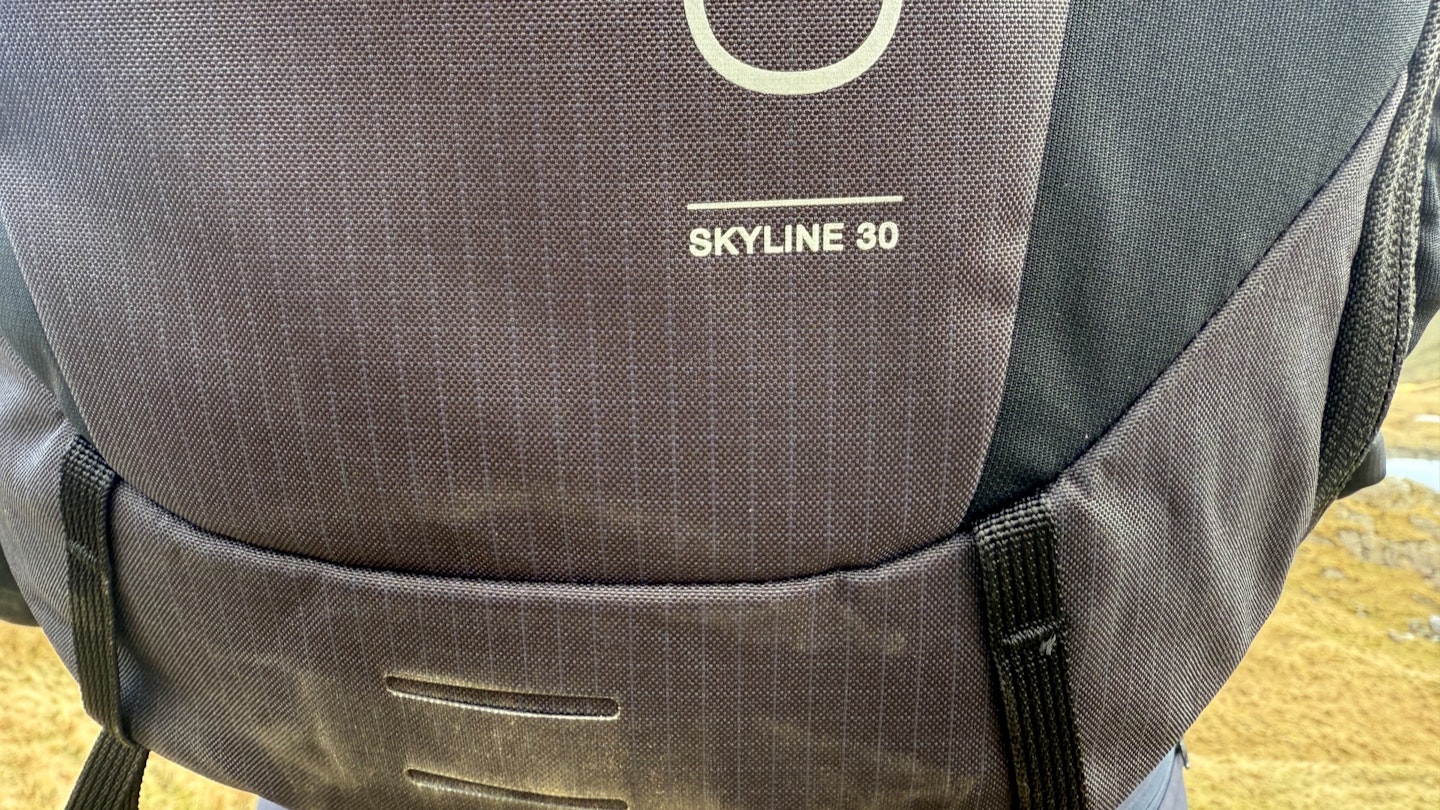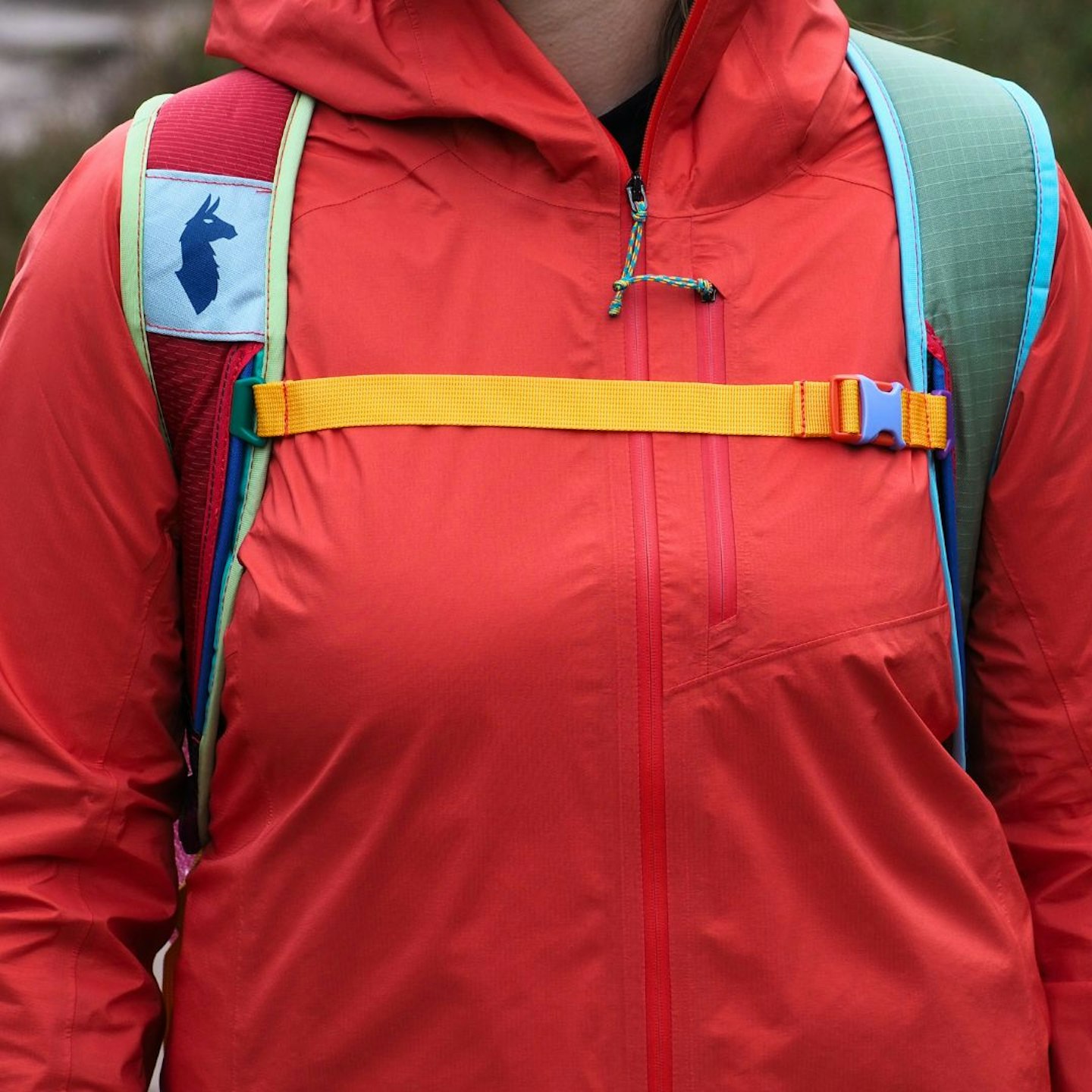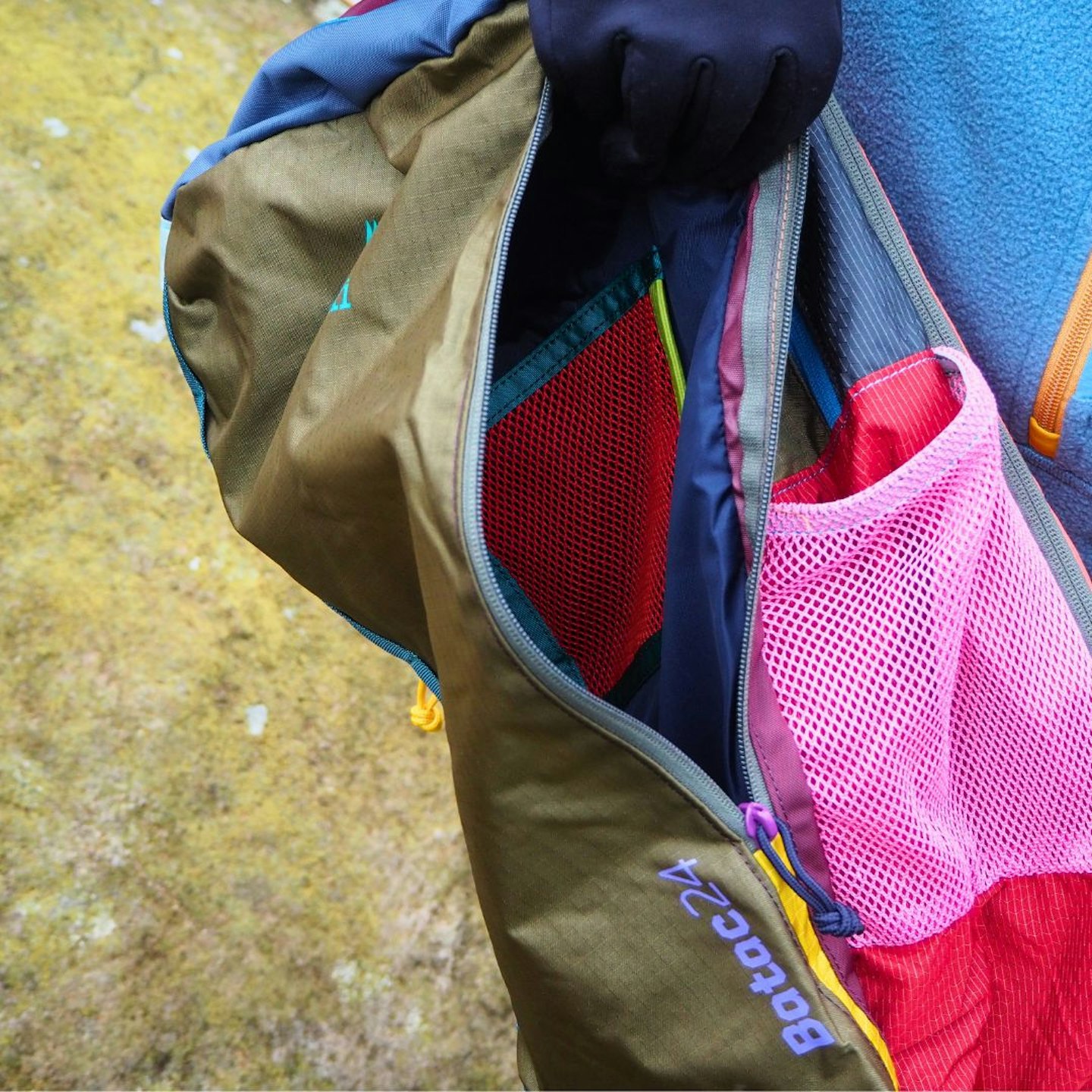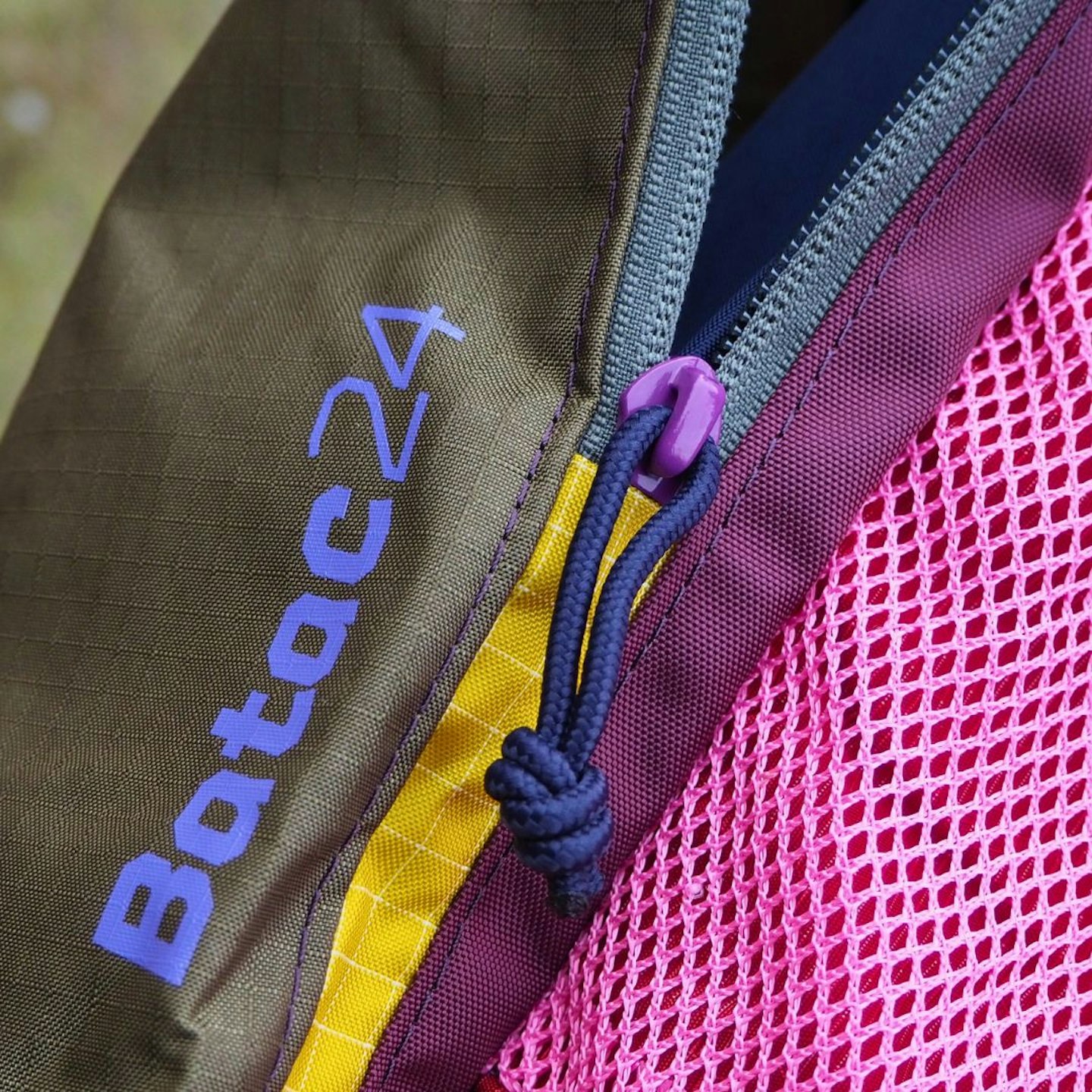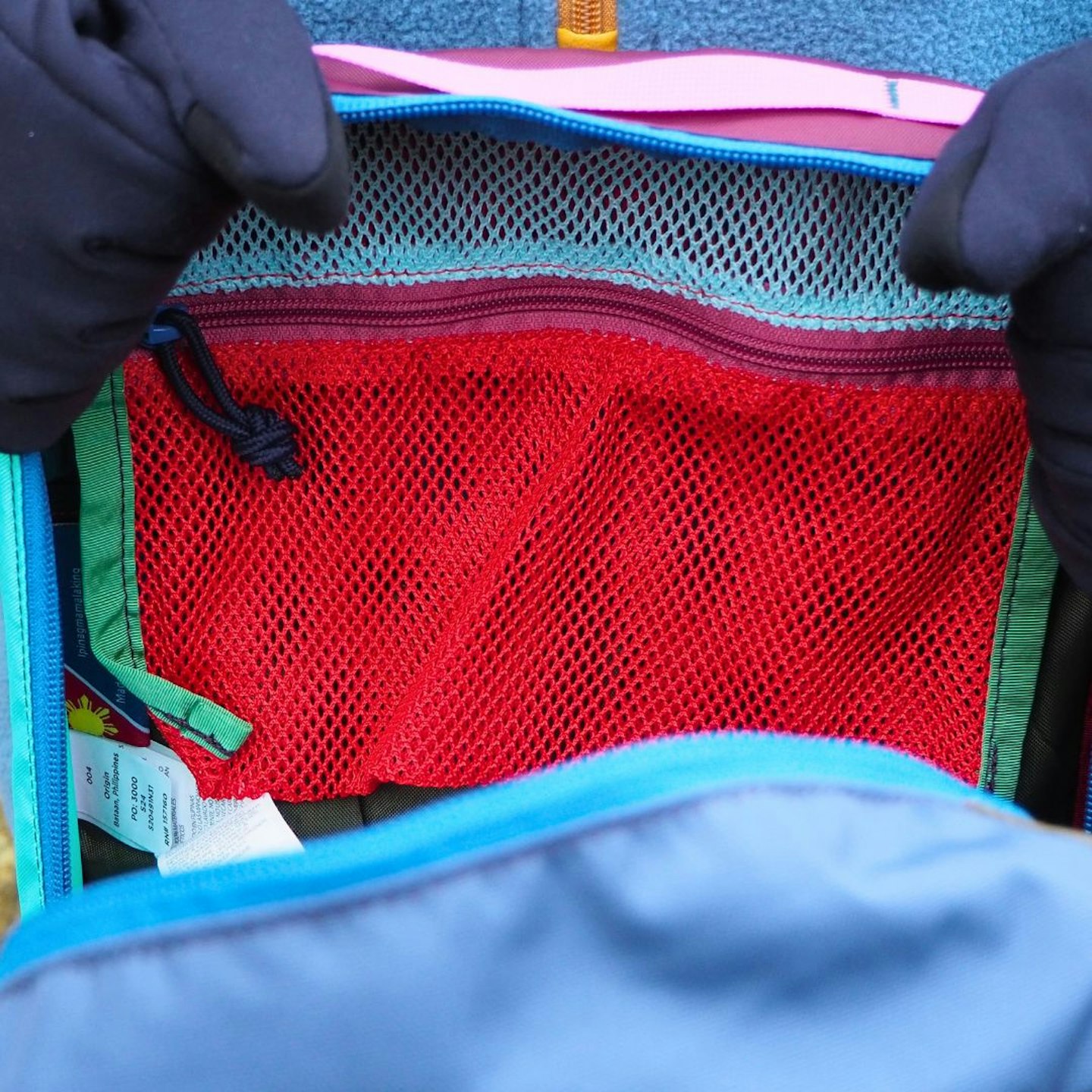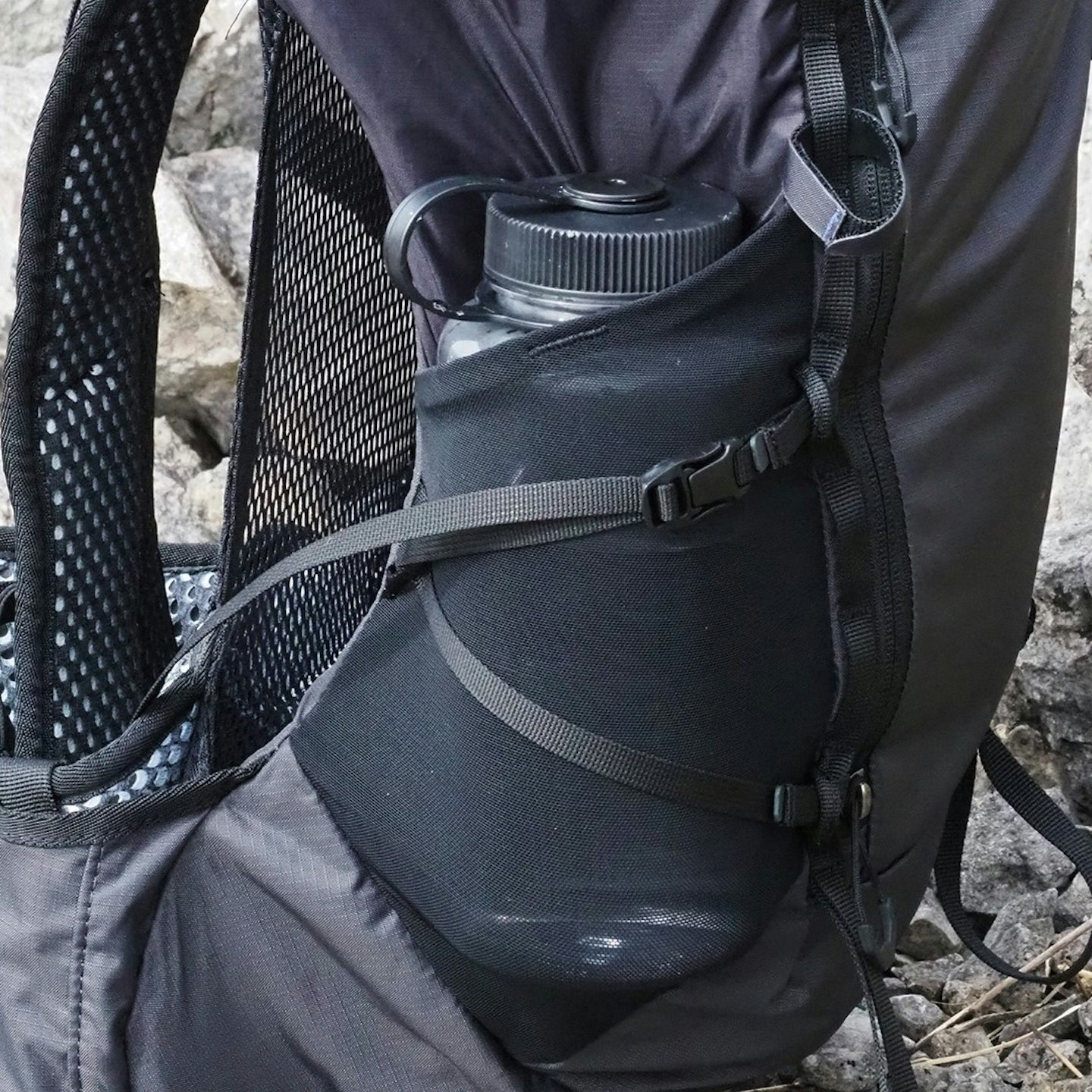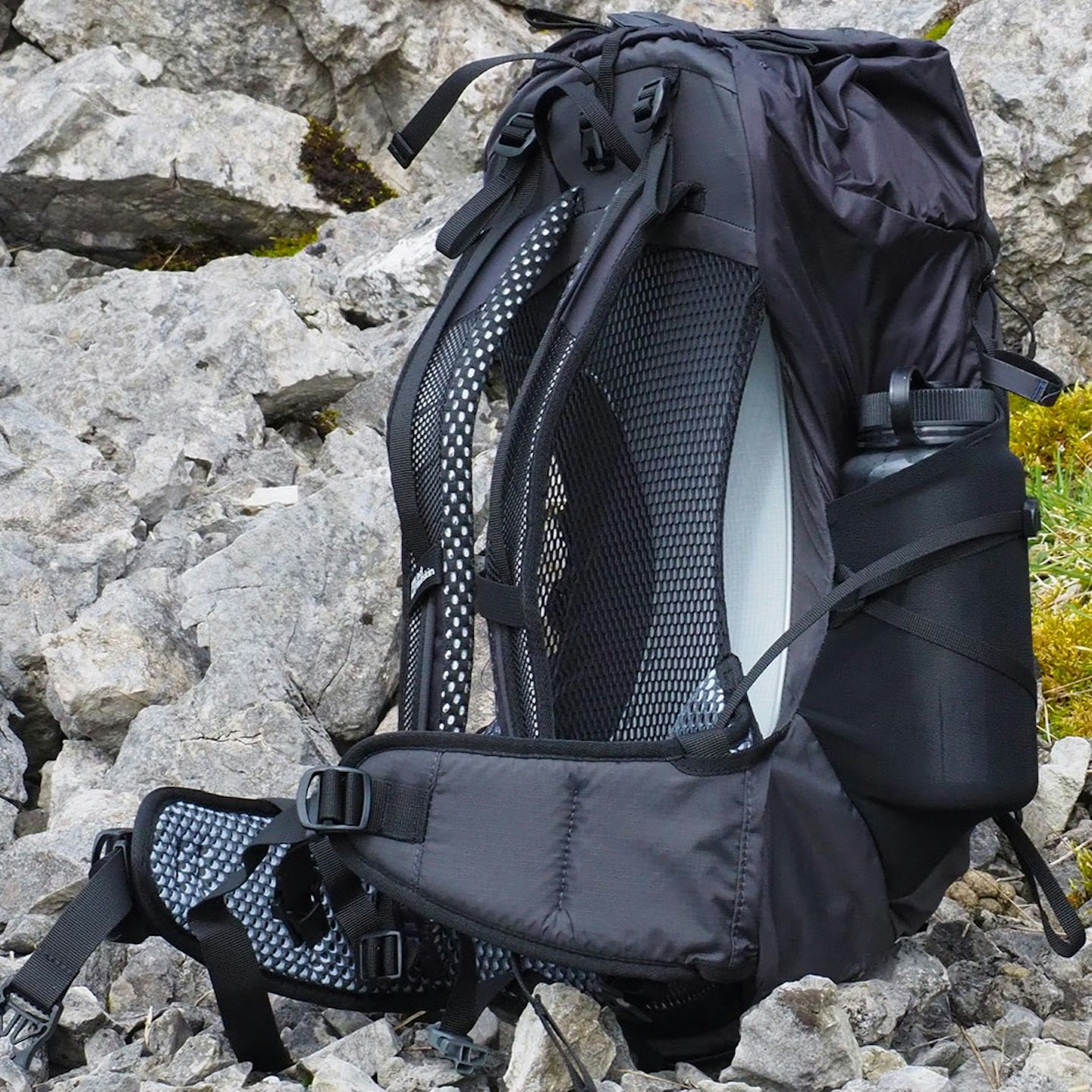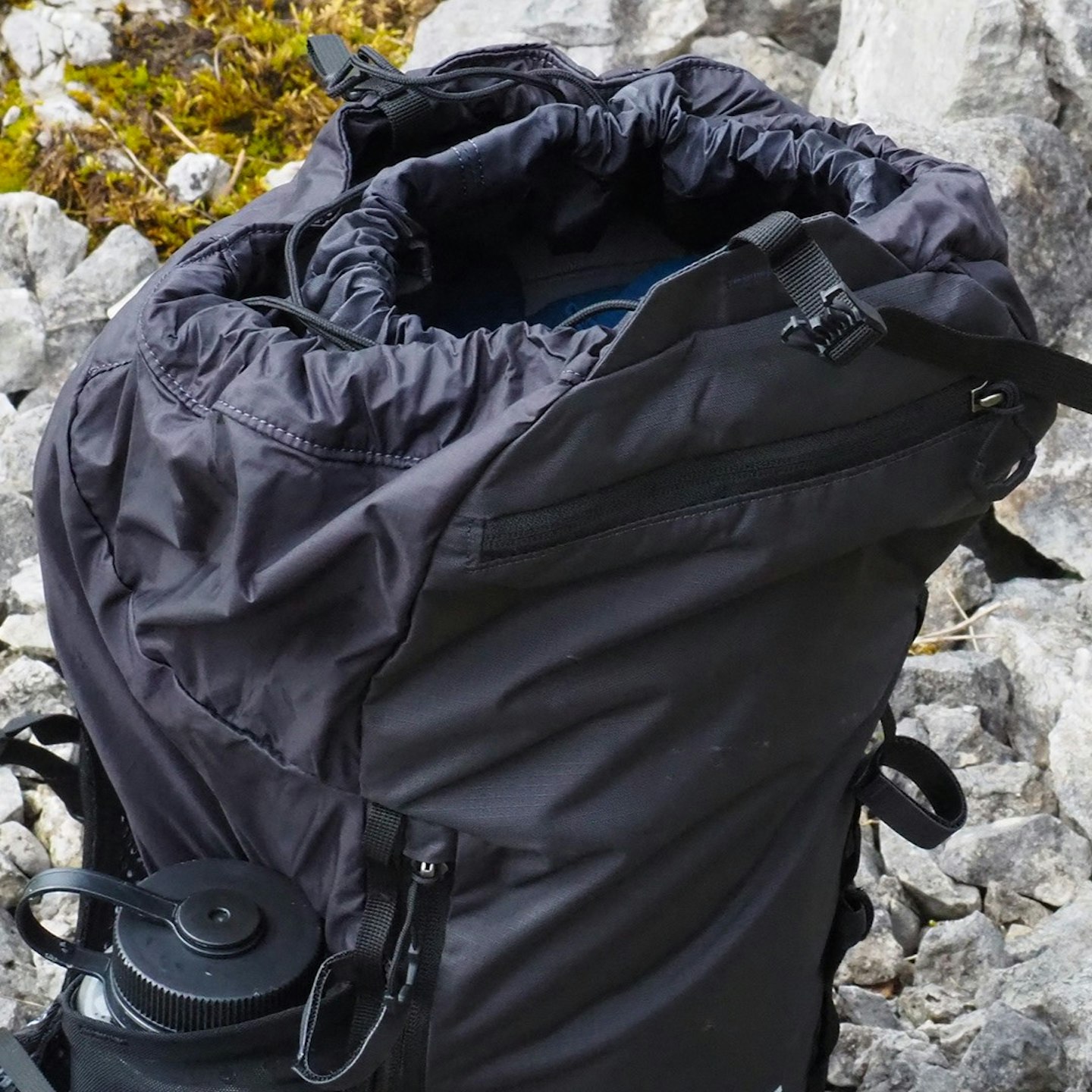Subbing in a small hiking daypack in place of a bigger rucksack is liberating. Capacious enough for snacks, spare layers and essentials only, you feel so speedy and agile wearing a smaller daypack, as opposed to lager hiking rucksacks.
And so, it’s hard to be unhappy when you’re out in the hills when the sun is shining and there’s not a cloud in the sky. Unless your little daypack is uncomfortable of course. Feeling the straps cutting into your shoulders, the belt digging into your hips and an unpleasant sticky patch slowly spreading across your back is no fun.
But it would be a shame to let such discomfort ruin an otherwise perfect summer hill day. That’s why we’ve picked out our top daypacks for warm weather walking, tried and tested in sunny (well, mostly) Snowdonia.
Designed to carry around 15-30 litres of kit, which ought to be ample capacity for a full dawn-to-dusk adventure, these daypacks are all about optimum carrying comfort, walker-friendly features and easy, breezy airflow to stop you getting hot and sweaty – even when the mercury soars.
If, however, you're in need of a multi-day pack, check out our favourite backpacking rucksacks.
Editor's note: This article was most recently updated in August 2025, when six reviews of new daypacks were added to the list.
What are the best hiking daypacks of 2025?
How we tested the best hiking daypacks
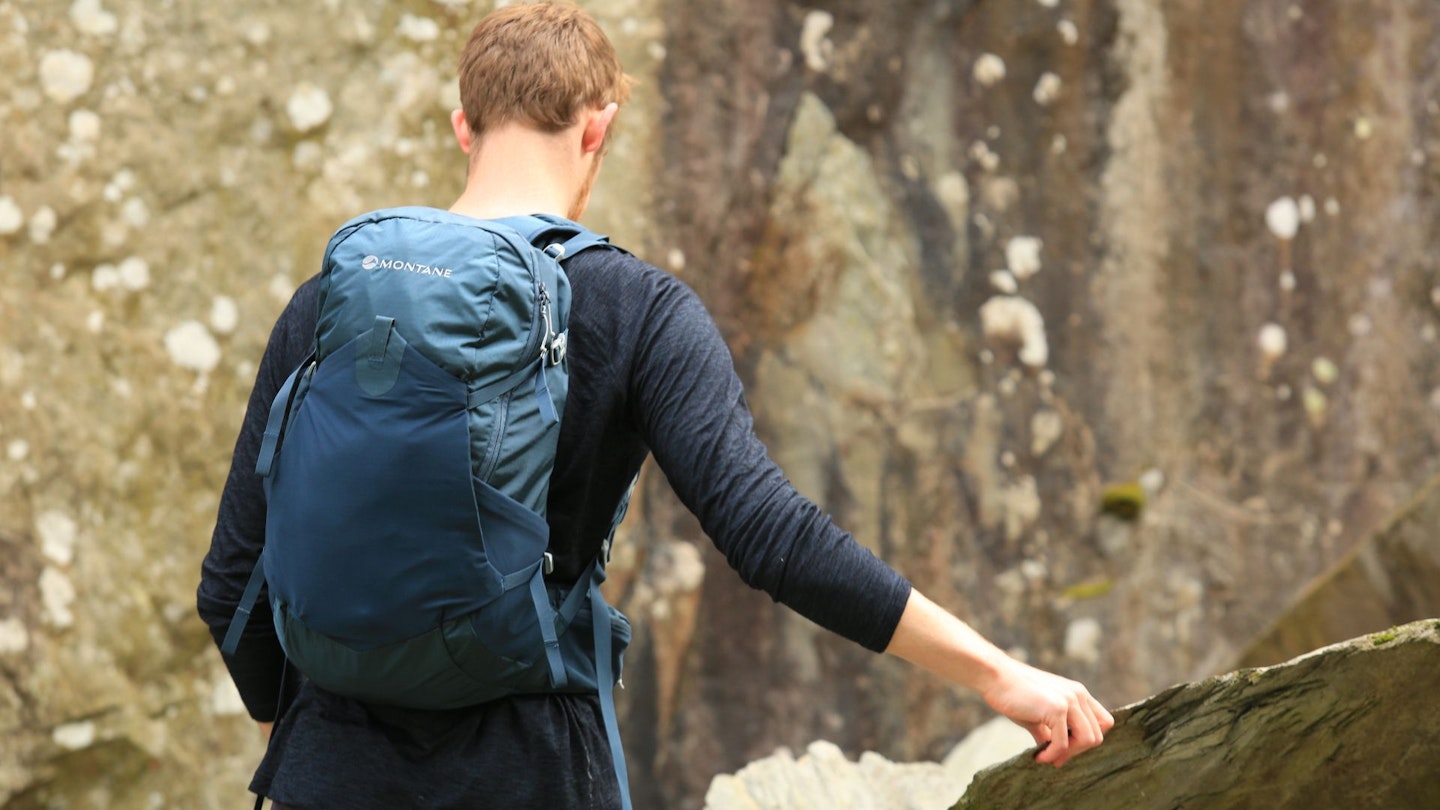
All the packs recommended here have accompanied us for many hours on hillsides and mountains. We consider what each pack is ultimately designed for and test it against the design brief. When testing, some of the key things we analyse include:
Comfort and performance: How comfortable is the back harness? Does it allow adequate ventilation? Does it offer enough support for the weight you'll be carrying? Does it feel secure and stable?
Features: Are there attachment points for walking poles or ice axes (if you intend to use them). How good is the organisation? Is it easy to stash layers like a waterproof jacket or quickly grab an essential like a head torch?
Construction and capacity: Is there enough space for everything you'd need on a day hike? Are the materials robust and do they offer any weather resistance (most hiking backpacks only offer light protection, so check out our list of the best waterproof backpacks for more)?
Value for money: Is it overpriced when considering how well the backpack performs? Or is the high price tag justified because it's genuinely a brilliant product?
The models recommended here were tested and reviewed by James Forrest, Matt Jones and Chris Williams. James is a freelance gear tester and one of the UK's most high-profile writers who has been writing features and conducting outdoor gear tests for LFTO and Trail magazine for several years.
Matt is the former editor of Walk magazine and Scouting magazine, and has years of experience testing kit and writing about the outdoors. Chris is a journalist and hiking fanatic from New Zealand and was LFTO's staff writer and gear tester between 2021 and 2024. We still get him in for a test from time to time.
To find out how we review products, head over to our how we test page.
Best hiking daypacks reviewed:
The Talon (women's version, which we've also reviewed, called Tempest) is an exceptionally popular hiking backpack. Every time we summit Snowdon we play games of 'Talon and Tempest count' and for a bigger challenge, 'can you climb Snowdon without seeing a Talon or Tempest?'. We've never managed the latter.
But the Talon packs are popular for a reason: they're really good. The 22-litre version is a great daypack, packing in loads of practical features, top notch build quality, and decent eco credentials.
The Talon 22 uses Osprey's AirScape back system, which holds the pack closer to your back for stability but has cutout channels for ventilation. It's a great balance, and makes the Talon suitable for technical routes if needed, suitable for heavier loads, and still vented enough for hot days. Although, if you want the best airflow back system, go with a suspended mesh system like on the Osprey Stratos.
In terms of storage and features, the Talon 22 has eight storage areas in addition to its main compartment, plus add ons such as Osprey's stow-on-the-go pole loops and LidLock clamp for bike helmets.
This is not a backpack for minimalists, it's packed to the rafters with features and excels as a versatile hiking day pack.
Check out the women’s version here or read our full Osprey Talon 22 review.
Pros
- Exceptional comfort
- Dynamic movement
- Ventilated back system
- Packed with features
- Loads of storage options
- Bluesign-approved main fabric
Cons
- Too fussy for those who prefer a minimalist pack
- Expensive
- Not as well-ventilated as a suspended back system
- No raincover
| RRP: | £125/$160 |
| Weight: | 901g/31.8oz |
| Materials: | Bluesign approved and recycled 100D x 210D and 420D nylon w/ PFC-free DWR |
| Volumes: | 6L waistpack, 11L, 22, 26L, 33L, 36L, 44L, 55L |
The Lowe Alpine AirZone Ultra 26, winner of an ISPO outdoor gear award, is a minimalist, ultralight backpack with strong eco credentials.
We found its innovative back system features a spring steel frame and AirZone mesh panel, ensuring excellent ventilation and comfort.
The pack comes in two back lengths and boasts a 26-litre capacity, made with recycled, lightweight 100D nylon. Despite its thin exterior, we found the AirZone Ultra 26 offers better durability and weather resistance than we were expecting.
The pack's features include a drawstring closure, hydration bladder sleeve, mesh stash pocket, bottle pockets, hipbelt pockets, and trekking pole attachments.
The carrying experience feels a bit unusual, due to the curved back panel, but unusual in a good way. It provides a light and agile feel, while being very well ventilated.
With its thoughtful design and sustainable materials, the AirZone Ultra 26 is ideal for those seeking a streamlined, high-tech, and eco-conscious hiking daypack.
Read our full Lowe Alpine AirZone Ultra 26 review or check out the women's version here.
Pros
- Lightweight
- High-tech
- Excellent ventilation
- Superb comfort
Cons
- No lid
- Curved back panel
- No side entry
| RRP: | £140/$180 |
| Weight: | 745g/26.27oz |
| Materials: | Recycled 100D nylon |
| Volumes: | 26L, 36L |
In terms of weight this is one of the lightest here. This impressive volume-to-weight ratio will appeal to fast-moving hillwalkers looking for a roomy daypack. Committed ultra-lighters might even get enough kit in the 30L version for an overnight wild camp.
Load-carrying rigidity comes from an internal U-shaped wire frame, while the back panel is made from ridged foam with a central air channel overlaid with super fine mesh. The harness is nicely contoured, though shoulder straps and hip fins aren’t as well-padded as some rivals. It still carries well, though.
The pack has both unusual and clever features. The hipbelt has one open stretch mesh pocket and one zipped pocket, with a nifty fold-out pouch for stashing a smartphone. Stretch mesh side pockets aren’t the deepest but will just about take a one-litre bottle.
Under the single-buckle lid, the hydration-compatible main compartment has a drawcord closure that doubles as top compression. There’s also a large top lid pocket and a useful mesh inner lid pocket with a key clip.
You also get a pullout raincover, dual side compression straps, two attachment loops for poles or ice axes, a front shove pocket and a zipped side-entry pocket for maps or guidebooks.
It’s a shame that it only comes in one back length, though there is a dedicated women’s version too.
Read our full Mammut Lithium 25 review for more.
Pros
- Lots of features
- Impressively light
- PFC-free DWR
- Mammut a Fair Wear Foundation member
Cons
- Not as well padded as some
- Only one back length
| RRP: | £105/$109.95 |
| Weight: | 851g/30oz |
| Materials: | Majority recycled and bluesign-approved nylon w/ PFC-free DWR |
| Volumes: | 15L, 20L, 25L, 30L, 40L, 50L |
The Mystery Ranch Coulee 30 is built for hikers who prioritise ruggedness and comfort on ambitious, gear-intensive outings. During testing, we were particularly impressed by its distinctive three-way Y-zip, which provided quick and versatile access – opening fully like a suitcase or partially for quick rummages.
You also get plenty of practical pockets, including deep side pouches, expandable front compartments, and spacious hipbelt storage.
Comfort-wise, the Coulee 30 excels, with plush shoulder straps and an adjustable back system that guarantees a precise fit across multiple sizes. The substantial lumbar padding and robust internal frame provided exceptional load stability in our testing, making heavier loads (up to about 12kg) manageable over extended periods.
However, this emphasis on padding meant the back panel tended to retain heat and moisture during strenuous hikes in warmer weather.
It's heavier and pricier than many competitors, but given its exceptional durability – originally designed to withstand military-grade usage – it's a compelling choice for serious adventurers who value robustness above minimalism.
If plush comfort, adjustability, and easy gear access matter more than lightweight breathability, we'd go for the Coulee 30.
Read our full Mystery Ranche Coulee 30 review or find the women's version here.
Pros
- Comfortable to carry even with heavy loads
- Rugged and well-built
- Multiple sizes and adjustable fit
- Great pockets
- Easy access to main compartment via Y-Zip
Cons
- Back panel can get hot and sweaty
- Relatively heavy
| Price: | £180 / $189 |
| Volume: | 30 litres |
| Men's sizes: | S/M and L/XL, plus adjustable back system |
| Women's sizes: | XS/S and M/L, plus an adjustable back system |
| Weight: | 1.29kg / 2lb 14oz |
The Berghaus Remote Hike 23 excels as a lightweight, agile companion for fast-paced hikes. We particularly enjoyed its innovative Freeflow back system, cleverly blending the best aspects of suspended mesh and contact-style back panels.
This provides exceptional airflow, which is a lifesaver on warm days, without sacrificing stability or intruding on internal space.
At just 910g, it’s impressively light, and the pack’s thoughtful layout is uniquely impressive. The extended clamshell opening and white internal lining simplify gear access, while multiple well-placed pockets – including generously sized hipbelt pockets and running-vest-inspired shoulder strap storage – mean essentials are always within easy reach. However, note that accessing the main compartment fully requires unbuckling side compression straps.
The snug, running-vest-inspired harness and streamlined hipbelt prioritise stability and breathability over plush padding, which makes sense given its modest 23-litre capacity. The main zip could be more weatherproof, and there’s no raincover included, so it’s best suited to fairer conditions.
Overall, if you're after a pack that effortlessly combines practicality, ventilation and mobility (without breaking the bank) the Remote Hike 23 is an excellent choice.
Read our Berghaus Remote Hike 23 review for more and find the women's version here.
Pros
- Lightweight
- Excellent balance between stability and ventilation
- Great features
- Well priced
Cons
- Fixed back length
- No raincover
| RRP: | £110 |
| Weight: | 0.91kg / 2lb 1oz |
| Volume: | 23 litres |
| Sizes: | One size (but men’s and women’s models) |
The Gregory Zulu LT 25 blends exceptional carrying comfort and robust build quality into a versatile daypack.
On spring and summer hikes, we appreciated the plush harness and substantial lumbar padding, paired with the pack's highly ventilated VaporSpan back system. The suspended mesh kept airflow consistent, effectively preventing overheating even on warmer days.
Despite the modest 25-litre capacity, this pack isn't a minimalist choice. The rigid steel frame provides impressive load support, and the wraparound hipbelt – with its handy zippered pockets – significantly improves stability, though it does add a bit of extra bulk.
We particularly liked the thoughtful layout: the main compartment offers easy access without interference from compression straps, and the robust external pockets provided secure storage for essentials.
At 1.1kg, it's certainly not ultralight, and some hikers may find the single-size fixed back length limiting – definitely worth checking fit before purchasing. Yet, if it suits your torso length, the Zulu LT 25 delivers superb comfort and ventilation.
For those prioritising comfort, ventilation, and durability over pure minimalism, this pack is a standout choice.
Read our full Gregory Zulu LT 25 review or find the women's version here.
Pros
- Great ventilation
- Durable and well-built
- Plush and comfortable harness
- Great features
- Includes a raincover
Cons
- Fixed back length
- Not the lightest
| Weight: | 1.1kg/2.4lb |
| Volume: | 25 litres (1525 cu. in.) |
| Sizes: | Men’s and women’s variants (Zulu/Jade LT 25) but only one size in each model |
| Dimensions: | 55H x 29W x 20D cm |
The Rab Protium 27 strikes an impressive balance between lightweight efficiency and mountain-ready versatility. On test in early spring conditions, including dustings of summit snow and colder temperatures, we found its 27-litre capacity roomy enough to comfortably stash extra layers like belay jackets, without feeling cumbersome.
Its streamlined, zippered main compartment and numerous practical pockets – especially the deep stretch-mesh front pocket and generously sized hip-belt storage – made accessing essentials quick and hassle-free.
Rab's Air Contour back system prioritises dynamic movement and flexibility, perfect for scrambling and faster mountain hikes. The adjustable back length and well-padded, breathable hip fins significantly enhance overall carrying comfort, though we noted that the relatively thin shoulder straps felt slightly strained with heavier loads above 10kg.
While the pack sits high on the back – occasionally noticeable during steep scrambles – it wasn't a major issue. At just over 1kg, it's a great choice if you value robust versatility over absolute minimalism.
Bonus points for some sustainable materials, including 46% recycled content and a PFAS-free finish. Ultimately, the Protium 27 isn't plush or ultra-padded, but for energetic, demanding mountain days, it's an excellent companion.
Read our full Rab Protium 27L review or check out the women's version here.
Pros
- Adjustable fit
- Stable to carry
- Great features
- Includes a raincover
Cons
- Narrow hydration reservoir pocket
- Shoulder straps not the plushest
| RRP: | £130 / $180 |
| Weight: | 1.05kg / 2lb 3.3oz |
| Sizing (men's): | M (to fit back length 19-21in/48-53cm) and L (21-23in/53-58cm) |
| Sizing (women's): | One size (17-19in/43-48cm) |
| Volume | 27 litres |
The Montane Trailblazer 25L offers a lightweight, 25-litre capacity backpack experience, drawing inspiration from Montane's popular running vest packs for a snug fit and agility.
Priced at £140, it's at the more costly end for hiking daypacks but given that you can use it for fastpacking and even trail running as well, makes it slightly better value through veresatility.
We found its back system is flexible, with a foam back panel and mesh for ventilation. This simplicity will divide opinion, as it doesn't support heavier loads well. However, the Covalent harness enhances comfort, for fast and light hillwalkers.
The adjustable back length system works fine but feels a tad flimsy and loose in the larger size. Weighing just 850g, it's lighter than many daypacks, with dimensions of 54cm x 25.5cm x 18.5cm.
Features like the lid, mesh pockets, and Z-compression system add versatility, resembling running vest packs. Constructed from partially recycled materials like Raptor Cross Lite 70D nylon, it tries to balance lightness with durability but leans more in favour of lightness.
Despite its potentially polarising design, the Montane Trailblazer 25L impressed us with its comfort and functionality, ideal for those all about speed and agility on the trails.
Read our full Montane Trailblazer 25L Backpack review or check out the women's version here.
Pros
- Lightweight
- Fast hiking design
- Clever features
- Spacious and plentiful pockets
Cons
- Design will polarise opinion
- No side entry
- No raincover
| RRP: | £140 / $180 |
| Weight: | 850g / 1lb 14oz |
| Materials: | Recycled 70D nylon and recycled polyester w/ PFC-free DWR |
| Volume: | Unisex: 8L, 18L, 25L, 32L, 44L. Women's: 16L, 24L, 30L. |
The Exped Skyline 30 impressed us with its exceptional carrying comfort and outstanding organisation, though it’s undeniably hefty at 1.42kg.
During testing, we found the steel internal frame provided excellent structure and support, comfortably handling heavier loads. The adjustable shoulder yoke, available in two back lengths, ensured we quickly achieved a precise, personalised fit.
We particularly appreciated the practical design details: the extended main zipper made gear access quick and easy, allowing us to reach the bottom without emptying the entire pack.
Internal mesh pockets prevented small items from becoming lost, while the dual-access side pockets allowed easy on-the-go hydration. The roomy front shove pocket handled spare layers with ease, secured by a versatile carabiner buckle.
The pack’s plush foam-and-mesh back system balanced stability with reasonable ventilation, though we did find it warmer than fully suspended mesh designs in hot conditions.
Despite this, its durability and robust construction stood out, making the Skyline 30 ideal for hikers who prioritise carrying comfort, organisation, and rugged reliability above ultralight performance.
Read our full Exped Skyline 30 review.
Pros
- Comfortable to carry even with heavy loads
- Rugged and well-built
- Two sizes and adjustable fit
- Great features
- Easy access to main compartment via extended zip
- Includes a raincover
Cons
- Relatively heavy
- Not as well-ventilated as a fully suspended back system
| RRP: | £159.90 / $199.95 |
| Weight: | 1.42kg / 3lb 2.1oz |
| Volume: | 30 litres |
| Sizes: | S/M and L/XL, plus adjustable back system |
Where all the other daypacks here are dedicated hiking packs, the Cotopaxi Batac is a much more of a general use option.
We were really impressed by it. Sure, all the other packs here are better for long or demanding day hikes because it lacks a proper back system, but the Cotopaxi Batac is fine for more leisurely hillwalking. It's very lightweight, comfy, and breathable.
But where it performs leaps and bounds ahead of the others here is when the country or hill track ends and you enter into an urban environment. This is partly due to the way it looks, blending effortlessly into a metropolitan setting, but there are important design touches as well such as a proper laptop sleeve.
The Batac is part of Cotopaxi's Del Dia collection, which mean's each bag is made from the leftover fabric from other companies' production runs, saving it from landfill. Every bag has a unique colour arrangement.
Read our full Cotopaxi Batac 24L Backpack review.
Pros
- Very lightweight
- Sustainable
- Two large compartments plus laptop sleeve
- Good value
- Versatile
Cons
- Not suitable for carrying heavy loads
| RRP: | £75 |
| Weight: | 482g/17oz |
| Materials: | Repurposed ripstop nylon |
| Volumes: | 16L, 24L |
Jack Wolfskin's Prelight Vent 20 daypack is notable, like the Lowe Alpine AirZone Ultra 26, for featuring a highly ventilated back system. We found this back system, called Aerovent Core, generates a lot of airflow and is great for use in hot weather.
Despite its technical appearance, the Prelight Vent 20 aims to have a broad appeal with a variety of features including a simple main compartment with a hydration bladder sleeve and accessed via drawcord or side zip. There are also trekking pole and dasiy chain loops for attaching gear externally, in addition to secure drink bottle sleeves on either side of the pack.
At just under 1kg, this pack offers good comfort and performance, though its 52 x 20 x 27cm size doesn't offer as much volume compared to competitors, due to that curved back system.
We were pleased to see sustainability is a strong point here, with the Prelight Vent 20 being made from recycled materials, being PFC-free, and having bluesign-certification.
Priced at £150, there are certailny better value options out there, both in terms of larger volume for the price, or simply outright lower cost like you get with Decathlon's Quechua 30L MH500 backpack. Despite its cost, though, we liked the Prelight Vent 20's blend of comfort, ventilation, and eco-consciousness.
Read our full Jack Wolfskin Prelight Vent 20 review.
Pros
- Excellent ventilation
- Sustainable design
- Raincover included
Cons
- Relatively pricey
- Curved back panel robs some internal space
| RRP: | £150 |
| Volumes: | 20L, 25L, 30L |
| Materials: | PFC-free recycled nylon |
| Weight: | 990g / 2lb 3oz |
What to look for in a hiking day pack
What volume/capacity do I need for a daypack?
A daypack for summer can be smaller than a daypack for winter hiking. This is simply because you don't have to carry such bulky clothing and items like crampons. Basically, in summer, go as small as you can while still being able to carry the essentials.
Are hiking daypacks different sizes?
Some, but not all, hiking daypacks come in different sizes. Some have adjustable back lengths and some are one size only. Irrespective of whether a daypack has various sizes or is adjustable or not, it’s vital to pick a daypack with a size appropriate for your back length, which is easy to measure at home. Alternatively, outdoor gear retailers can usually assist you.
Once you know your back length, trying on a loaded pack is the easiest way to do find out which packs are most comfortable for you.
What are the different back systems?
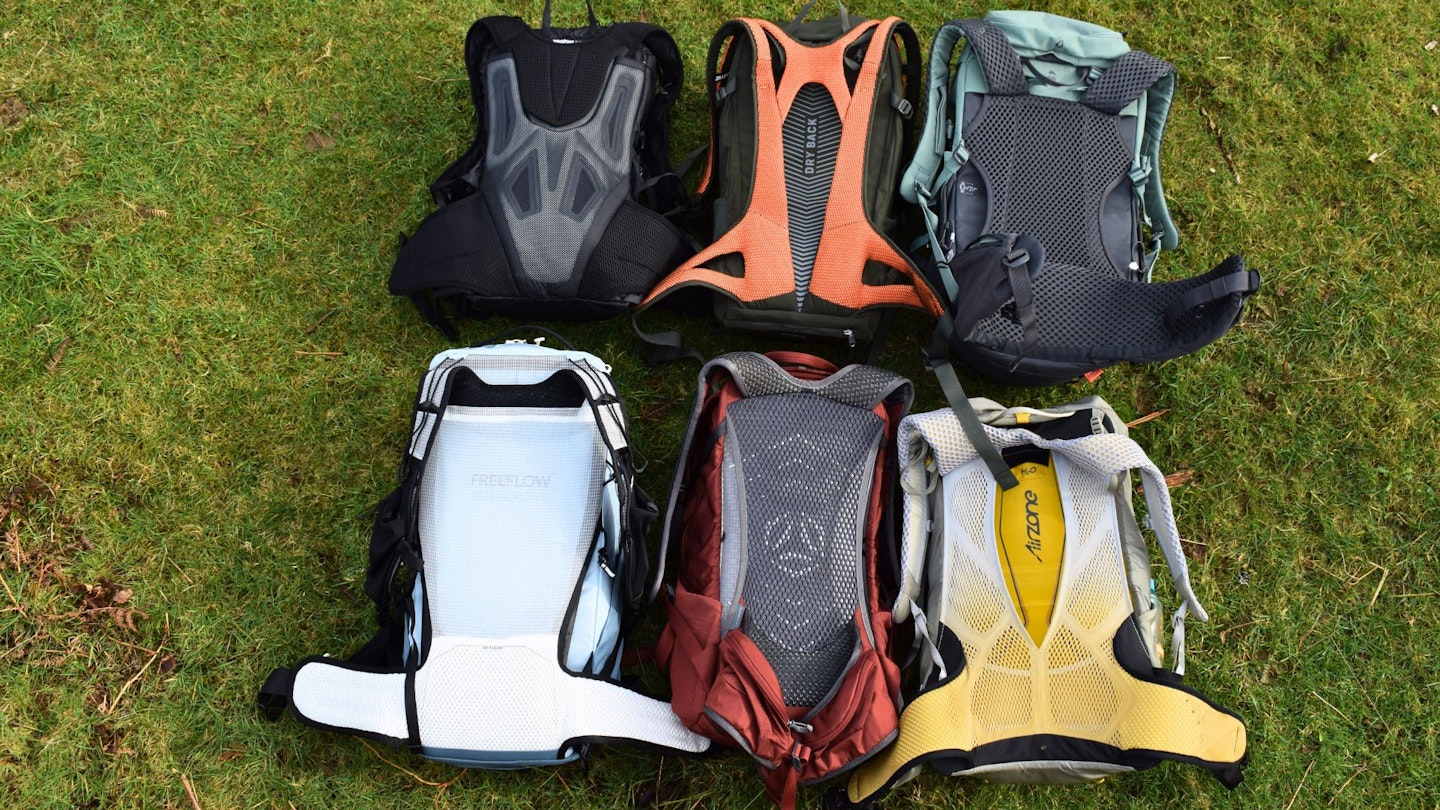
Broadly speaking, there are two types back panel types. Back panels made from perforated foam or padding carry the load directly next to the body. This approach is comfy and stable, with a close-to-the-body feel.
Suspended mesh back panels, conversely, hold the pack’s bulk away from your back, which some hikers prefer because this type offers much better ventilation, but can feel like the load is levering away from you. It’s all down to personal preference.
Does my daypack need a frame?
The frame provides rigidity and stability, and is more beneficial for carrying heavier loads. With lighter loads for summer day hikes, the importance of a strong, load-bearing back system isn't so crucial.
Ultralight packs may be completely frameless, but other daypacks have an internal frame made from spring steel or aluminium. To save weight, others use a high-density plastic framesheet or a stiffened foam back panel.
What pocket arrangement is best?
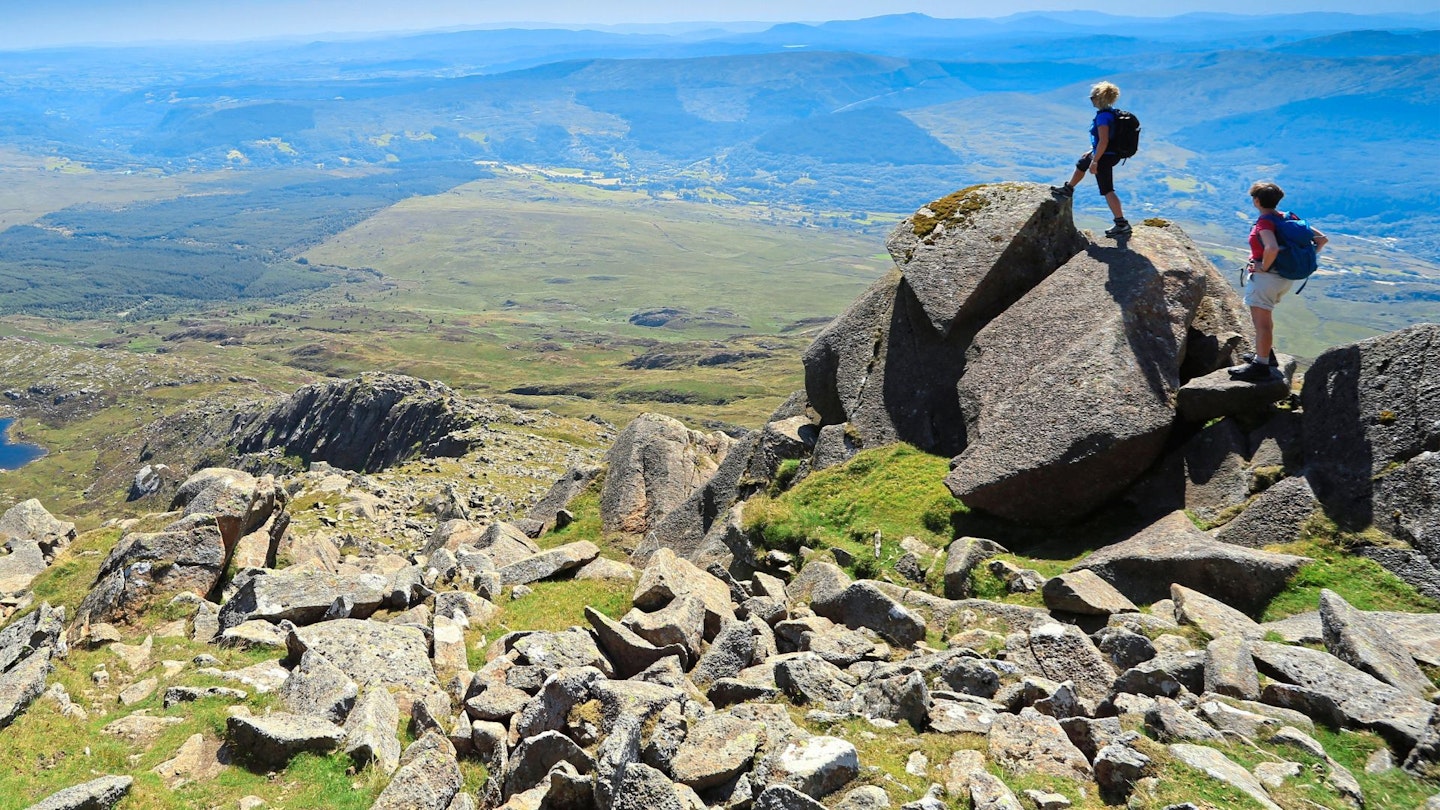
Zippered hipbelt pockets are handy for stashing small items you’ll need on-the-go. Internal zippered pockets are great for car keys or a wallet; some type of additional stash pocket at the front (either elasticated or zipped) is useful for quickly stowing and accessing extra layers; and elasticated side pockets are perfect for water bottles.
Increasingly, daypacks also feature large pockets made from stretchy mesh and a pocket (or sleeve) for a hydration bladder, as well as an outlet for the drinking hose. External compression straps, webbing loops, toggles and bungee cords can be used for attaching items such as trekking poles and camping gear to the outside of your pack
What is a lid?
The lid covers the main opening. Some are fixed to the pack, while others are detachable with a ‘floating’ design. A current trend is towards lidless packs.
How do I clean and repair a hiking daypack?

Packs are the most repairable piece of hiking equipment. If you’ve got a tear, broken a strap, or stuffed zip, it can be repaired. Quite a lot of brands offer repair services, and many outdoor retailers do too. Make use of them.
To maintain the performance of the fabrics used to make hiking packs, it’s important to clean them properly. It’s very simple and primarily involves spot cleaning using the correct cleaning solution – we recommend either Grangers or Nikwax tent and gear cleaning kits.
These are both effective, eco-friendly cleaning products specifically for the types of fabrics used on outdoor gear. You can use both these cleaning kits for all your outdoor equipment including tents.
About the author

James Forrest is a prolific peak bagger and long-distance walker who’s one of the most high-profile outdoor writers in the UK.
He writes regular features and route guides for Trail and has been one of our main gear testers for the last few years. James is based on the edge of the Lake District so when he isn’t off on his latest crazy adventure or challenge, he’s walking in his local fells.
James reviews every type of outdoor kit for Trail and is a real authority on everything you need for wild camping and packing light for a multi-day walk.

